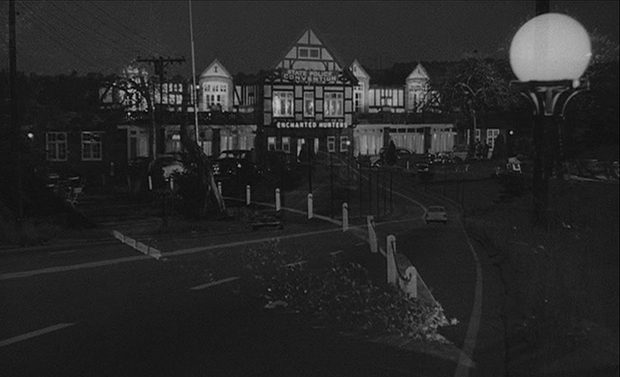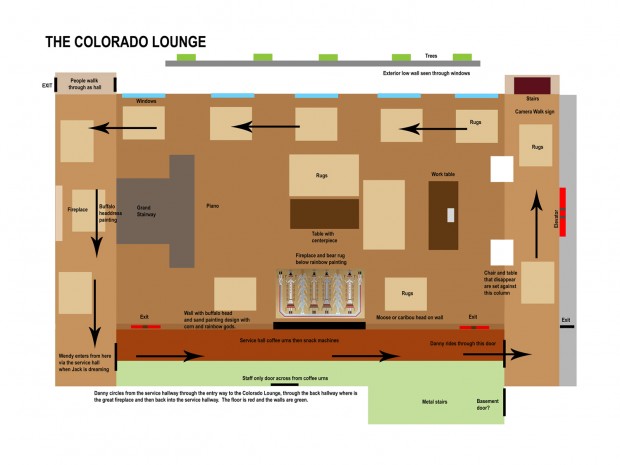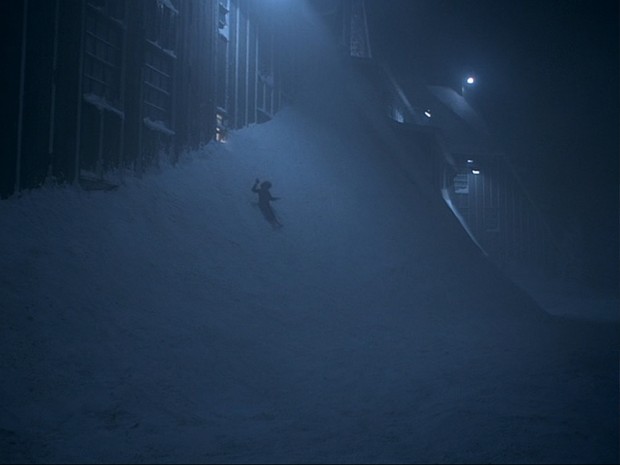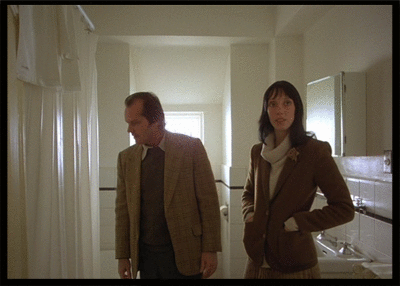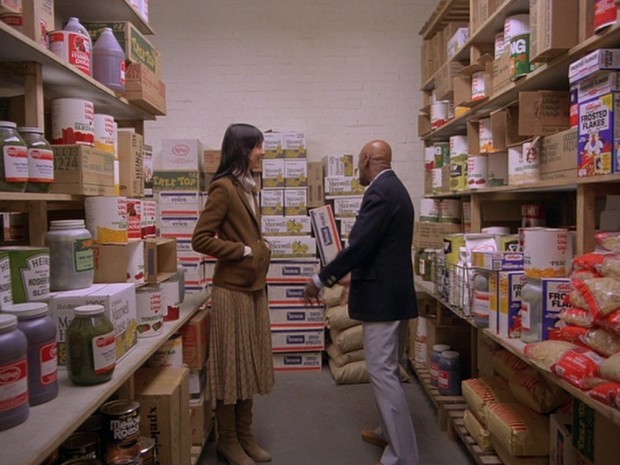STANLEY KUBRICK'S THE SHINING
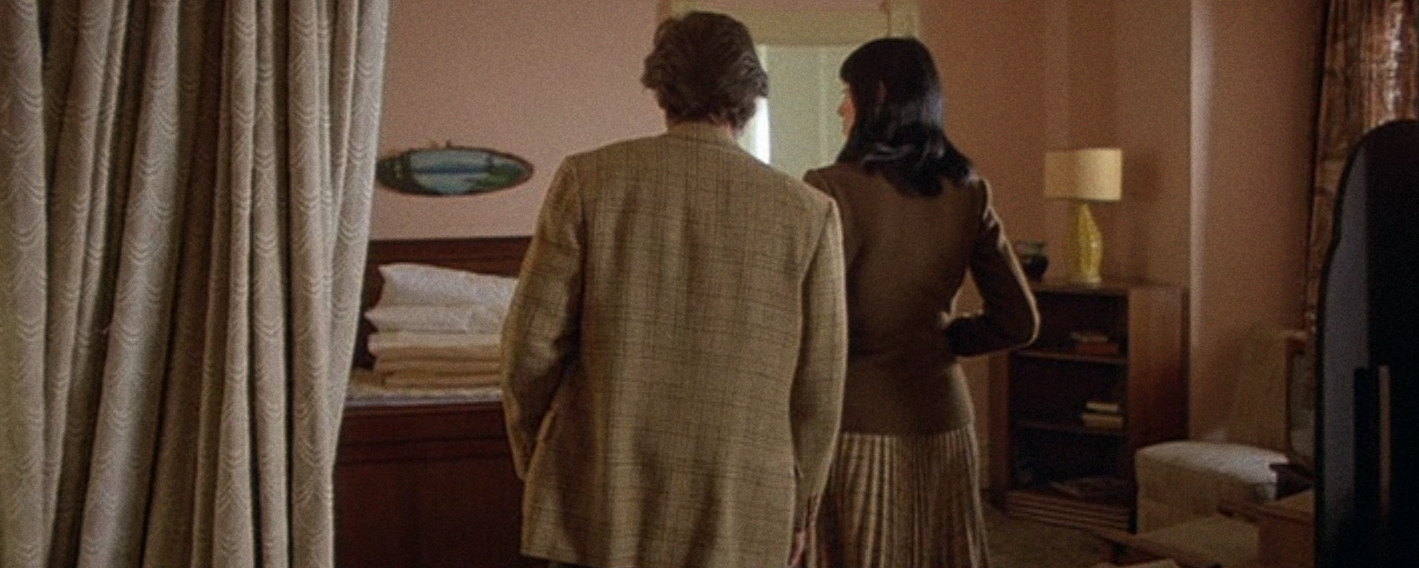
Go to TOC for this film ( (which has also a statement on purpose and manner of analysis and a disclaimer as to caveat emptor and my knowing anything authoritatively, which I do not, but I do try to not know earnestly, with some discretion, and considerable thought).
CLOSING DAY
And why every hotel should have a Room 237 for kicks and giggles
TOC and Supplemental Posts | Part 1 - The First Ascent | Part 2 - The Interview | Part 3 - Closing Day |
Part 4 - A Month Later | Part 5 - Tuesday | Part 6 - Thursday | Part 7 - Saturday | Part 8 - Monday |
Part 9 - Wednesday Part One | Part 10 - Wednesday Part Two | Part 11 - 8 AM | Part 12 - 4 PM |
Films Home
LINKS TO SECTIONS OF THE ANALYSIS ON THIS PAGE:
The Second Ascent, Shots 96 through 100
The second and first ascents compared.
Comparing with Lolita, the Crossfade from the Road to the Hotel.
Carson's City Tunnel and the Lodge and the Highway Tunnel in the Opening
On "Dies Irae" of the Opening, the Story of the Sacrifice of Isaac, and the Rainbow
Lunch with Playgirl in the Lobby, Shot 101
The Joke of the Luggage, Playgirl, Relationship with Traumnovelle and The Killing
The Colorado Lounge, Shot 102
Seeming illogical traffic flow of the numerous departing employees. Confounding orientation with 90 degree turns.
The Game Room, the Monarch Ski Poster, and the Minotaur, Shots 103 through 107
Other Butterflies
The Blackboards
Suite 3 and the Moving Shower Curtain, Shots 108 through 109
The Moving Shower Curtain Linking to the Movement of Other Objects
The Introduction to the Famous Hedge Maze, Shots 110 through 111
Our first of how the maze doesn't belong there and how the studio set is entirely different from the aerial views.
On the Indigenous Theme Containing Multiple Levels of Inference and its Connection to Jacob and Esau. This section illustrates how multiple interpretations can be had and the difficulty in sorting out what may be intentional. 1907 through 1909.
The Snowcat and the Sphinx
The Gold Room and the Unwinding Hours as Referring to the Labyrinth Thread, Shots 112 through 113
The Kitchen as Maze, Shots 114 through 116
Shining in the Story Room Shots 117 through 122
How the Calumet baking powder might trigger the Jacob's ladder shining state.
The Ghost Ship, the Flying Dutchman, and Individuals in Exile, Shot 123
There is Nothing in Room 237, Shots 124 through 163
In Review, What Has Kubrick Given Us in This Section?
What's the teaser candy bait?
What's the distraction?
What's the secondary teaser candy bait?
What's the deep infrastructure?
DRIVING UP TO THE OVERLOOK
THE SECOND AND FIRST ASCENTS COMPARED
96 Title shot. Closing Day. (17:38)
97 Aerial of mountain. (17:42)
Note: Google Map pictures of locations of the Closing Day ascent up the mountain are in a separate post. More than just for fun, doing the series pinpoints the Continental Divide as being perhaps the psychic/psychological terrain of the lodge.
Closing Day opens with a brief soaring view of the VW traveling the Sidewinder road through the mountains to the hotel. The auto has just passed where the road is intersected by a natural route of water run off from the snow, as well as a seeming avalanche path, heightening the feeling of removal from civilization.
The choice of a shot for this ascent is plotted so we have a seeming reverse view from what we observed under the opening credits, as the canyon drop was on the left during Jack's drive up but is now on the right.
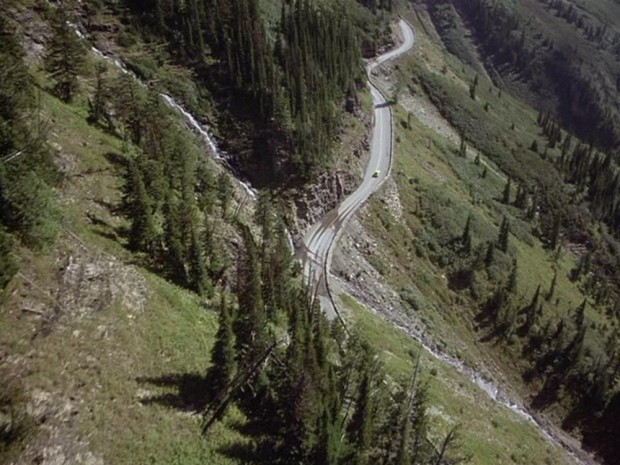
Fig. 1 - The Going-to-the-Sun road, traveling on it now west to east. View the location from Google street view.
You can see with the crossfade from the lake to the road on the first ascent, from the film's opening sequence (below image), that it visually anticipates this second ascent on Closing Day (above image), the water path foremost in the second ascent even echoing the angle of the mountain's reflection in the lake in the first ascent.

Fig. 2 - Comparing the ascent on Closing Day with the crossfade to the serpentine road in the opening.
As it turns out, studying the Going-to-the-Sun road on which they are driving here and in the opening, they are indeed going the opposite direction on the same road. In the opening, Jack was driving east to west. Here, they are driving west to east. Both end with a crossfade to the lodge, and the crossfade from the driving scenes to the lodge are on either side of the Continental Divide. So it may be that Kubrick conceived of the "divide" as being a psychic metaphor for the lodge, a place of dualities and double stories, and the Overlook resides at a zero point where these come into contact.
The red numbers and arrows show the Opening Day approach to the Overlook, the cliff drop off always on screen left: (1) the helicopter begins here and swoops up to the 4 point, moving west; (2) is the next shot of the serpentine road Jack travels; (3) is the field he crosses and is out of sequence; (4) is the point where the helicopter passes him; (5) is the West tunnel he goes through, rather the East, still going west, but on the lower section of road; (6) is where he is shown after the tunnel, passing the kayak car; (7) is where Kubrick fades out, Jack still going west on the east side of the Continental Divide.
On Closing Day, the car is always going west to east, the cliff drop off always on screen right.
The blue numbers and arrows showing the Closing Day shots, (1) appears to be where we enter, (2) is what we view out the window rather than having an aerial shot, and (3) is where we crossfade, still to the other side of the Continental Divide, heading east.
I almost didn't look for where the footage out the car window was taken on Closing Day as it is barely seen, but then did decide to look for it and found it. It is across the Continental Divide on the east side, but what I'm interested in, as I said, is that the final shots with the cross-fade are to either side of the Continental Divide. If we do count the ground shot then both journeys have one skip ahead to the other side of the Continental Divide, then a drop back, before crossfading out on either side of the Continental Divide. With the titles, on the day of the interview, Jack travels east to west, skips for one shot over to west of the Continental Divide, but completes the sequence traveling east to west before reaching the Continental Divide. On Closing Day, Jack and his family drive west to east, skip for one shot over to the east side of the Continental Divide, then the sequence ends with them traveling west to east before reaching the Continental Divide.
The spot (blue 1) where they are as they begin on Closing Day is interesting as it's at the Triple Arches. Kubrick often uses triple arches in his films. They were used in his short documentary on the twin boxers, part of the church where the boxer went to pray in the morning before his fight. Triple arches appear in Eyes Wide Shut at the "orgy", and most prominently at the hospital to which Bill went where he looked at the woman in the morgue.
98 MS car interior. (17:58)
Cut to the interior of the car, Jack driving, no one looking too cheery. Wendy wears a wilted brown flower decoration on her brown jacket, as if an expression of summer's end. She yawns sleepily.
WENDY: Boy, we must really be high up. The air feels so different.
Which is just fact, the higher you go the more rarefied the air, but reminds me of a switch in states of awareness or consciousness and of Danny's lapsing into trance which he will tell Dick Hallorann is like sleep. Also brought to my mind is the tale of Jack and the Beanstalk, the boy who who was sent hungry to bed as he traded the family's cow for magic beans rather than money. A magic beanstalk sprouted out of those beans, and on it he climbed high into the clouds, to the castle of the cannibal giant who possessed gold and a golden harp and the golden goose. Here we have the Torrance family moving from Boulder, high into the mountains, to a gigantic hotel where they expect to share in a small taste of a beautiful, luxurious, resort lifestyle.

Fig. 3 - Wendy remarks that the air is different.
DANNY: Dad.
JACK: Yes?
DANNY: I'm hungry.
JACK (irritated): Well, you should have eaten your breakfast.
Jack sounds terse, but isn't this a scene played out in countless cars on countless trips in countless families, so there's no reason for the audience to count this against Jack. Still, another question mark as to his character is tabulated.
WENDY: We'll get you something as soon as we get to the hotel.
DANNY: Okay, mom.
Speaking of getting something to eat...
WENDY: Hey, wasn't it around here where the Donner party got snowbound?
We remember Jack telling Ullman of Wendy's interest in horror stories.
JACK: I think that was farther west in the Sierras.
DANNY: What was the Donner Party?
JACK: They were a party of settlers in covered wagon times. They got snow bound one winter in the mountains and they had to resort to cannibalism in order to stay alive.
DANNY: You mean they ate each other up?
JACK: They had to in order to survive.
Wendy interrupts, reproving.
WENDY: Jack...
And of course we see it as an ill foreboding.
DANNY: Don't worry, mom. I know all about cannibalism, I saw it on TV.
Raising his eyebrows, Jack contemptuously mocks.
JACK: See, it's okay, he saw it on the television.
99 Aerial of the car. (19:19 begin crossfade to mountain road ending at 19:24.)

Fig. 4 - The Going-to-the-Sun road, traveling on it now west to east. View this location from Google street view.
A crossfade to the car traveling on the road through wisps of fog, clouds filling the valley below, the camera tracking in. We are very high up indeed.
100 LS of the lodge. (19:31 begin crossfade ending on the long shot of the lodge at 19:35.) Now we begin a crossfade from a shot of the car ascending the mountain to a shot of the Overlook Hotel. It's beautifully done so that the VW appears, in the crossfade, to be driving a path directly up to the main entrance of the lodge, and the shape of the lodge echoes that of the canyon wall, again blending the lodge with the rock and identifying it with the mountain.
The ascent to a sharp curve in the road in the above shot, in the crossfade, overlays the Closing Day's following shot of the lodge so precisely that the road stops right at the entrance to the lodge. Simply fantastic.
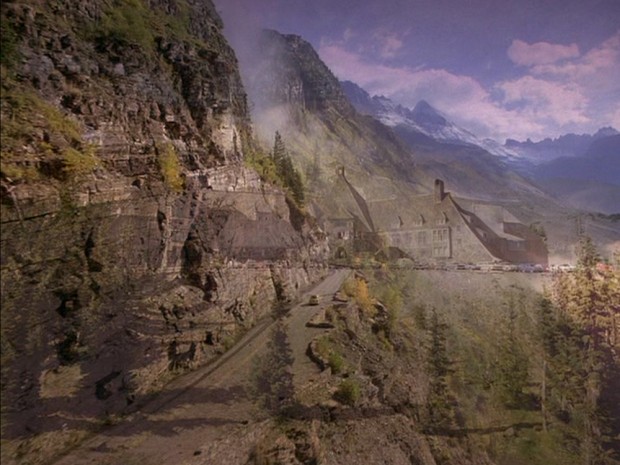
Fig. 5 - Crossfade from the road to the hotel, the road seeming to lead right to its main entrance.
There is abundant word play in the film and it is found in the idea of the Overlook itself. Not only do we have an aerial, overlooking view in these shots, as had with Jack overlooking the maze later, getting a broad overview of it, but the film is chock full of peculiarities that the audience overlooks as in passing over and not noticing. To overlook can be either to see the broad picture, or to not see what's there.
THE CROSSFADE FROM THE ROAD TO THE HOTEL, COMPARISON WITH LOLITA
The reference to the "covered wagon" takes us back to Lolita.
As far as we know, in Lolita, on the way to the Enchanted Hunter's lodge they are supposed to be in the White Mountains. Instead, rear screen projection locations have them in the South Dakota Black Hills. By way of the Covered Wagon Resort seen in the rear screen footage, I was able to pinpoint exactly where, and in my analysis on the film have shown several other rear screen shots that place them exactly where they were on Sturgis Road. As best as I can guess, Kubrick thus brings in again his play on opposites. Lolita and Humbert are supposed to be in the White Mountains but they are instead in the Black Hills. We are heading into mythical underworld territory with these drives in both Lolita and The Shining. If we go back to Killer's Kiss, Kubrick even there employs a negative reversal effect with his black-and-white footage when entering such territory, much as Cocteau had previously done in Orpheus.
The crossfade delivery of the VW directly into the front door of the Overlook also takes us back to Lolita and its crossfade to the Enchanted Hunter's lodge in which, again, the car is delivered directly into the front door.
CARSON CITY'S TUNNEL AND THE LODGE AND THE HIGHWAY TUNNEL IN THE OPENING
The crossfade of the car ascending the mountain into the seeming tunnel door of Overlook Lodge also takes us back to the west tunnel through which the car passes on its first ascent, where there had been the white car parked on the right side of the road preceding the tunnel, and the two-tone car beyond, on the left side. The parking lot of the lodge, shown at the end of the opening, had in it a white station wagon but no two-tone car. On Closing Day, the version of the parking lot shown later, between the front of the lodge and the maze, will have in it a two tone--white top and dark blue body--sedan sitting next to a wood paneled station wagon. So both cars, the white station wagon and the two-tone sedan, end up in the parking lot of the Overlook--the white station wagon in the aerial of the exterior in the opening, and the sedan, which had been viewed after the tunnel, in the parking lot of the film set which differs significantly from the Timberline.
This brings in as well the dual Carson City tunnels (see Carson City subheader in "The Interview" section). The fact that this second approach has the mountain side to the right of the VW, rather than the left, reminds of how in Carson City there are two tunnels being blasted from opposites sides of the mountain that will meet in the middle. In the movie, when Silent Jeff (who is never very silent) checks out the water seepage in the first tunnel, an avalanche blocks its entrance. Silent Jeff and his portion of the crew who were trapped are dug out via the yet unfinished second tunnel.
ON "DIES IRAE" OF THE OPENING, THE STORY OF THE SACRIFICE OF ISAAC, AND THE RAINBOW
The myth of the rainbow was introduced the day of "The Interview" via the rainbow on Danny's door. In the "Opening" we have also a natural rainbow effect that coincides with the tunnel. Cannibalism--or a sacrifice of a human individual as an offering for the gods, as opposed to offerings of grain--was considered in some myth the crime that resulted in lycanthropy and the flood that was intended to erase all life from the face of the earth as a consequence of human kind's evil nature. Something down this line is retained to a degree in the Jewish/Christian myth as well through the seeming concern with appropriate foodstuff that accompanies it, in that directly following the flood all animal and vegetable life is ordained as food, but flesh with life, which is blood, is forbidden, "And surely your blood of your lives will I require; at the hand of every beast will I require it, and at the hand of man; at the hand of every man's brother will I require the life of man."
A major taboo in most cultures, cannibalism, but its horrors are nothing new to young children, and television is likely a secondary source of knowledge, for fairy tales are filled with giants and hags intent on the slaughter of humans for food, especially children. Enticed by sweets, Hansel was caged by a witch who intended to sup on him when he was fat enough, and Wendy will later briefly refer to this tale in the kitchen of the Overlook.
In the maze myth of Theseus and the Minotaur, though the Minotaur is pictured as having the head and forequarters of a bull and bulls graze on vegetation, it devoured the young men and women who were delivered to it as a sacrifice. As it had the hindquarters of a man, this amounts to cannibalism. And that really is a curious part of the story of the Minotaur. Usually we think in terms of the combining of the bull and human nature yielding a bull-like man, but we also have the bull nature taking on human nature in that it would eat meat and cannibalize these youth.
We have even something of a hint of divine cannibalism in the story of God's demand that Abraham sacrifice Isaac. For what is sacrifice intended to do but be an appeasing food (the scent of the burning, at least) for the gods.
I've already introduced in the Opening section my thoughts on Kubrick's choice of "Dies Irae" for the music and possible tie-ins with Rosh Hashanah. As there noted, "Dies Irae" comes in part from a prayer uttered during Rosh Hashanah on the day of judgment. Stanley Kubrick is the one who has introduced Rosh Hashanah, by way of "Dies Irae", at least by inference. Now, what do we find in the reading for the second day of Rosh Hashanah:
And it came to pass after these things, that G-d did test Abraham. And He said to him: "Abraham!"
And he said: "Here I am!"
And He said: "Please, take your son, your only son, the one whom you love, Isaac; and get thee into the land of Moriah; and offer him there for a burnt offering upon one of the mountains which I will tell thee of."
And Abraham rose up early in the morning, and saddled his donkey, and took two of his young men with him, and Isaac his son, and broke up the wood for the burnt offering, and rose up, and went to the place of which G-d had told him.
Then on the third day Abraham lifted up his eyes, and saw the place afar off. And Abraham said to his young men: "Stay here with the ass; and I and the lad will go yonder and worship, and come again to you."
And Abraham took the wood of the burnt offering, and laid it upon Isaac his son; and he took the fire in his hand, and the knife; and they went both of them together.
And Isaac spoke to Abraham his father, and said, "My father!" and he said, "Here I am, my son."
And he said: "Behold the fire and the wood: but where is the lamb for a burnt offering?"
And Abraham said: "G-d will provide himself a lamb for a burnt offering, my son." And they went both of them together.
And they came to the place which G-d had told him of; and Abraham built an altar there, and laid the wood in order, and bound Isaac his son, and laid him on the altar upon the wood.
And Abraham stretched out his hand, and took the knife to slay his son.
And an angel of G-d called to him out of heaven, and said: "Abraham! Abraham!" And he said, "Here I am!"
And he said: "Lay not your hand upon the lad, neither do anything to him: for now I know that you do fear G-d, seeing that you have not withheld your son, your only son, from Me."
And Abraham lifted up his eyes, and looked; and behold, behind him a ram caught in the thicket by his horns: and Abraham went and took the ram, and offered him up for a burnt offering in place of his son.
And Abraham called the name of that place Adonai-Yireh ("G-d will be revealed"); as it is said to this day: "On the mount G-d will appear."
The land of Moriah means Seen of Yah and takes us back to MRH, the mirror in which Danny has his vision. The offering is OLH, as a burnt offering, a holocaust. A similar word is a step, or stairs, the idea of ascent. Abraham rises and takes two (shnayim, from ShNH, double, refer to my notes on ShNH) boys and Isaac and the wood for the offering and proceeds to the place of sacrifice, which the party reaches on the third day. Isaac asks where is the lamb for the burnt offering and Abraham replies that god will provide. The word for lamb is seh from Sha'ah (desolate). Abraham builds the altar, binds his son, and takes his knife to slay him--at which point, as the story goes, he is stopped by a messenger of god and is provided instead a ram caught in a thicket by its horns (QRN, horn, cornet, elephant's tooth, rays, shine). That Abraham was stopped in time however is not always the accepted view. There are other readings that determine Abraham did indeed slay Isaac, for he returned from this trip not with Isaac but only with the two boys who had accompanied them.
The word for the knife with which Abraham was going to use to kill Isaac is ma'akeleth, meaning something with which to eat.
The usual point of the story is that Abraham, by reason of his faith, was righteous in his actions, but there is and has been some contention as to what this means, and how was it, after all, righteous that Abraham was willing to slay Isaac rather than, for instance, beg god for mercy.
We can begin to see how this becomes also a deep concern of the film with Jack later being willing to "correct" and slay Danny and Wendy because he is told to do so by what he accepts as a higher authority.
Is it any wonder when Dick asks Danny if lamb is favorite food, he emphatically replies, "NO!"
Why is the story of Abraham remembered on Rosh HaShanah, a memorial day (zikaron)? Because Rosh Hashanah, as observed in Dies Irae, is concerned with repentance, and Abraham's actions are comprehended as a complete and righteous submission. The sound of the shofar on Rosh HasShanah is intended to remind of atonement through supplying a sacrificial substitute (the ram). The sound of the horn is also intended to drown out the accuser.
That Kubrick would see in The Shining an opportunity to explore themes of devotion, and obligation to authority to the point of murder, is unsurprising, as this was a recurrent consideration in his films. On the bookshelves in A Clockwork Orange we see at least one book concerned with the holocaust, and in The Shining we have the The Wish Child observed in the Boulder apartment, a book which set the stage for National Socialists in Germany. Kubrick, while deeply concerned with what enabled the Germans to slaughter millions, may have also discerned a parallel of sorts with the willingness of Abraham to sacrifice Isaac because he was told to do it. He may have been exploring the question of complete subjection of the individual to any higher authority.
LUNCH WITH PLAYGIRL IN THE LOBBY
Coming out of the crossfade we see the mountain above the lodge magnificently wrapped in reaching, grasping fingers of low cloud. During the course of the movie the mountain will entirely disappear from sight.
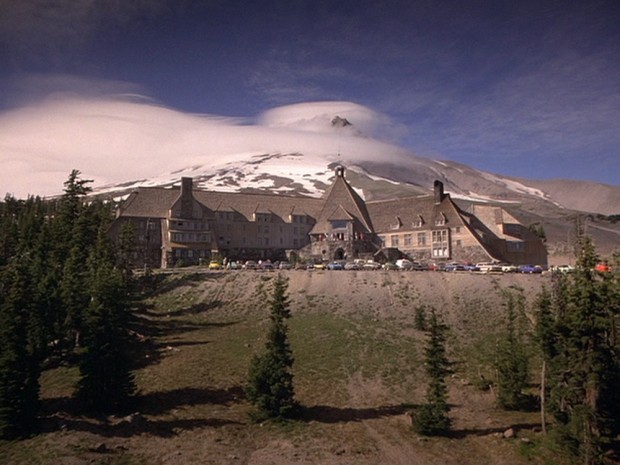
Fig. 6 - The exterior of the Overlook/Timberline.
The parking lot is packed, a yellow VW on the far left and on the far right we seem to see a red Snowcat.
101 LS-MS Lobby. (At 19:40 crossfade to the lobby begins, ending at 19:43.)
Now a crossfade to one of the cleaning crew mopping the floor of the lodge's lobby--and though this is a mundane task not deserving much of attention, it fits in nicely with the Carson City dual tunnel idea and the water seepage there, the fact that the entrance to the Overlook has been conflated with that of the mountain tunnel in the opening shots.
A ladder stands nearby next the reception area. We see numerous boxes and workers carting in furniture from perhaps patio areas, including folded mattresses. Why there might be mattresses outside I don't know.
With the crossfade, the ladder is laid over the pyramid-shaped roof of the center portion of the lodge, each accentuating the other.
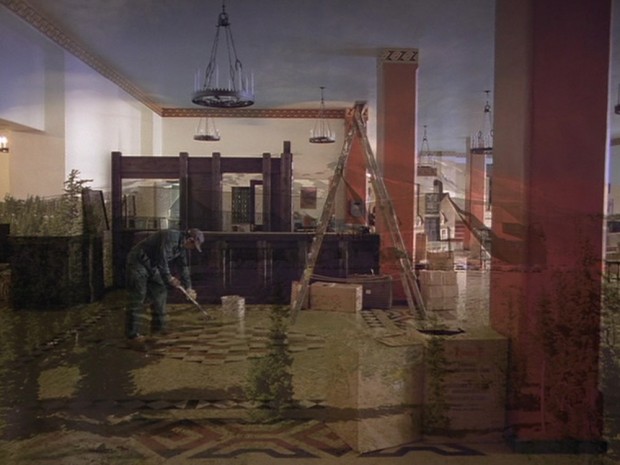
Fig. 7 - Crossfade from the exterior of the lodge to the lobby.
There is another ladder with a man on it before the cashier's area, that man seemingly working on the cashier's sign. He wears a plaid shirt and jeans rather than in the jumpsuits worn by nearly all the rest of the cleaning crew. We will see this also in the Colorado Lounge, one lone worker in plaid shirt and jeans while the rest wear jumpsuits. A plaid shirt and jeans is more down the line of Jack's standard attire as caretaker.
The hotel closing down, there is a general commotion and hubbub of the place being cleaned by numerous employees who are also preparing to depart. Ullman (who is dressed in a brown leather jacket and rust-colored pants, so his attire is the same predominate coloring of the hotel lobby) enters with Bill Watson.
No longer in his managerial suit, Ullman, in this attire, was unexpectedly fashionable for the time.
STUART: What time does the plane leave?
BILL: 8:30.
STUART: Well, that still gives us time to go over everything first.
This 8:30 is a play on the chapters "8" and "4" that compose the final day (when Dick flies in from Miami), and the possible reference to "8 and 1/2" at the beginning of "The Interview" section.
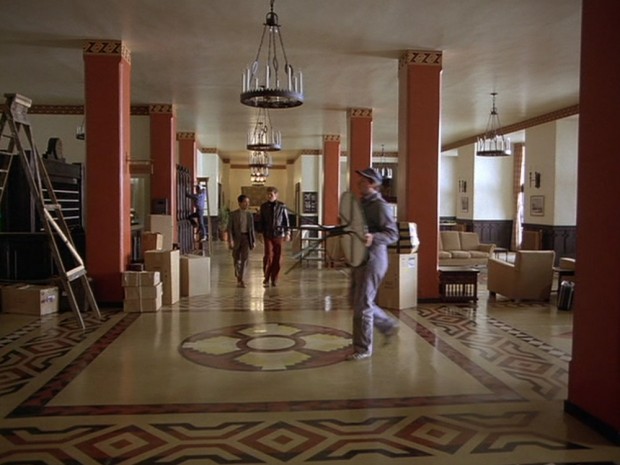
Fig. 8 - Ullman and Bill cross the lobby. A worker carries in a table that mirrors/doubles the design of the floor over which he carries it.
Ullman and Bill approach Jack who is reading an issue of Playgirl in an armchair in the same area where, on the day of the interview, a bellhop had appeared to carry to a group of people a service tray of food as Jack crossed to the reception desk. A woman with blond hair had been seated in the chair now occupied by Jack.
Dishes rest on a table beside Jack, including a can of Coke.
Straight men wouldn't normally read Playgirl, it being a soft-core pornographic magazine published ostensibly for women though it also served gay men. One wouldn't expect Jack to be reading a pornographic magazine at all here, certainly not in front of any employer, not to mention the magazine is intended to seem as though it belongs to the hotel and is casual reading material that was lying about, which is also unlikely. Yet Jack behaves quite nonchalantly about it, so the magazine may not be quite as it seems, it may have some other meaning here. The issue of Playgirl is perhaps immediately notable considering later in the film Jack's manuscript is revealed to be only the repeated phrase, "All work and no play makes Jack a dull boy". In "The Interview" section, Danny had complained how in Boulder there was no one with whom to play. The later invitation of the two girls to Danny is that he come and play with them.
Collative Learning shows the Playgirl is from January 1978. If one is hoping to find what year the action of the movie is supposed to have taken place, 1978 might be a good guess.
Two women carrying bags, though they are entering the lodge rather than exiting, call goodbye to Mr. Ullman and he remarks bye in return. No one bothers to say goodbye to Bill Watson.
WOMEN ENTERING FROM THE MAIN DOOR AND CROSSING THROUGH LOBBY: Bye, Mr. Ullman.
STUART: Bye.
Bill is a non-presence. Even though he would be well known to everyone as the custodian, he is never acknowledged by them.
THE JOKE OF THE LUGGAGE, PLAYGIRL, RELATIONSHIP WITH TRAUMNOVELLE AND THE KILLING
See also the post The Relationship of The Yellow VW in The Shining to the Traumnovelle Novel.
STUART: Good morning, Jack. I hope you haven't been waiting too long.
JACK (rising): No problem. In fact we had time to grab a bite to eat.
(A "sha" sound is heard in the sound track.)
STUART: Glad you made it before they shut down the kitchen.
Jack, having stood, turns and greets Bill.
JACK: Hi.
BILL: Hi.
STUART: Is your family having a look around?
JACK: No. My son has discovered the games room.
STUART: Has your luggage been brought in.
JACK: Right there.
Jack saying, "right there," points it out to the rear, by the door, as two women (one in a red plaid jacket) and a man exit the front door with their luggage.
It is a huge stack of luggage, case upon case upon case, all of it mismatched (one is a red plaid suitcase) including a Big Wheel tricycle, and one considers that it would have been impossible for the small VW to haul that huge stack of luggage up to the hotel. It's like an absurd joke. I love it. Bill glances at the array of luggage with a seeming expression of irritation.
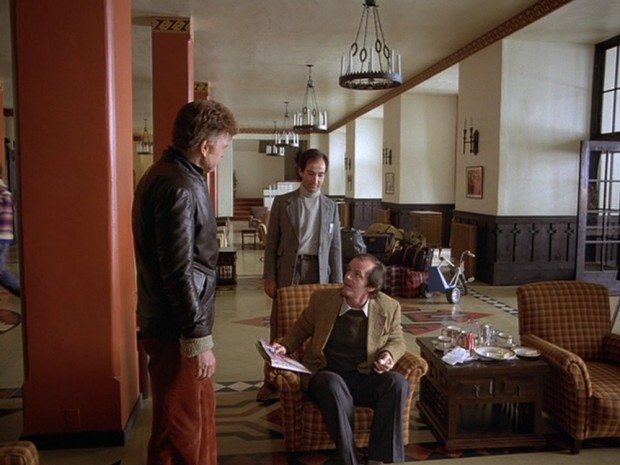
Fig. 9 - Too much luggage for a VW.
STUART: Well, in view of all the ground we have to cover today I suggest we have a quick look at your apartment and then get started straight away.
As workmen in gray worksuits and hats continue carrying in furniture from outside, he directs Bill to have the Torrance's things carried up to their apartment.
STUART: Bill, would you have the Torrance's things brought to their apartment?
BILL: Fine.
Bill tersely replies and walks away. It's the last thing we will hear him say.
Bill would seem absolutely unimpressed with Jack.
JACK: I better collect my family first.
STUART: Oh.
Jack points in the direction of the green service hall, moving toward it with Ullman. We are as yet unaware that it is the green service hall toward which Jack points. Our only knowledge thus far of what may be back in that direction is construed via the two tennis players who had come from that direction on the day of the interview, and the waiter porting the lunch service who had also come from that direction.
As for that luggage. Jack is sitting reading the Playgirl magazine and we have all that luggage in the background, too much for a little VW to carry. King's VW was red, while it is yellow here. Why? We have Alex Colville's painting of the woman and the yellow VW, which is never shown in this film, but certainly must be understood to be included in it. But we also have referenced a yellow bag that appeared in Albertine's dream in Traumnovelle. Following is what I write on it in my Eyes Wide Shut analysis:
Off the living room to the screen right of the fireplace is his office. He [Bill] enters it. This view of the office is quite different than what we saw when Alice had asked him if he wanted to wrap presents earlier in the night. There is now a credenza where before there had been an easy chair. He unlocks a cabinet, and conceals the Rainbow bag in it, removing an expandable file from the cabinet in order to do so.
With the expandable file we have a reference to The Killing. In that film, the morning of the robbery at the racetrack, Johnny goes to a luggage shop, located next to a maternity shop, and purchases a briefcase. He hides in it a duffle bag and a mask. After he's let into the back area of the racetrack clubhouse, he goes to the empty employee's locker room. He puts on the mask. The duffle bag? He uses that for the loot he steals. The rigid briefcase isn't expandable, the duffle bag is. The maternity shop comments on this expansion and contraction, like a pregnancy. Trust me on this. We have a joke based on this in The Shining. A small VW delivers Jack and his family to the Overlook, yet when we see the luggage they've carried up with them it's too much for even a station wagon. No VW could carry it. It's a reference back to the duffle bag hidden in the briefcase, the concealed duffle being able to hold a lot whereas the briefcase can't.
If we refer to Schnitzler's book, to which Kubrick acquired rights somewhere around 1970 or so (I've read differing dates), in the dream that Albertine relates to Fridolin, he goes about acquiring jewels and fine clothing for her, putting them in a yellow bag that expands so that it can hold everything. This is the equivalent of the yellow VW.
Already in 1956 in The Killing Kubrick has the expandable duffle bag. Had he already read Schnitzler's novel but didn't acquire the rights until much later? Or had Kubrick found in the novel a parallel to ideas he's already expressed?
To expand upon the connection of all that luggage to The Killing, in shot 281, Johnny, preparing for the heist, exits Jeffrey's Luggage store. Beside it is a maternity shop. Across the street is a store called Playmates (note how we have the Playgirl here in The Shining in the same scene with all that luggage). In the background is a Coca-Cola sign. Christmas tree decoarations line the street though it is too early for them. The resonant ingredients here are the luggage store, the maternity shop, the briefcase Johnny is carrying and the Playmates store. What's in Johnny's briefcase? We won't find this out until he's in the locker room at the racetrack, but in the case is his clown mask and a duffel bag. You see, no one can carry out two million dollars in a brief case. That slim little brief case is hiding in it something that expands, the duffel bag. It's to be compared with a pregnant woman whose womb expands in pregnancy. The slim briefcase is just to hide the duffel bag which will expand and expand in size as it's filled with looted racecourse money. The briefcase is discarded once the duffel is taken from it.
The Playgirl is a New Year's January edition.
After blowing the shofar on Rosh Hashanah we say hayom harat olam. The word harat is connected to pregnancy and birth. Herayon means pregnancy in modern Hebrew, and horeh is the name for a parent. The medieval commentator Rashbam, on Genesis 49:26, further connects the word to har meaning mountains - parents and ancestors being the ancient mountains from which we are hewn.
Following these associations, English machzorim tend to render our phrase as "Today is the birthday of the world", which may conjure up images of a big cake with 5771 candles.
Rabbi Matis Weinberg, however, translates it : "today is the conception of the universe". In his striking phrase, Rosh Hashanah is the "womb of the year". On these days, all of the possibilities of the coming year exist in embryo. "The developing foetus is exquisitely vulnerable to minute changes in the uterine environment... in the same way, the nascent year is sensitive to small variations in Rosh Hashanah the womb, which defines the year's potential."
Source: http://www.thejc.com/judaism/jewish-words/37901/harat-olam
The idea of infinite potential often arises with the New Year.
Most prayer books translate the words hayom harat olam as “Today the world is born.” But a closer look at the Hebrew reveals other possibilities. The most straightforward word, hayom, simply means “today.” Olam can mean “world,” a word that’s become quite familiar from the phrase tikkun olam, “repairing the world.” But olam can also mean “forever” or “eternal,” as in the phrase l’olam va’ed. And harat, which we usually see translated as “born,” comes from the Hebrew word for pregnancy, herayon.
So when we put all that together, the phrase Hayom harat olam could also translate as “Today is pregnant with the eternal possibilities of Creation.”
Source: http://www.centralsynagogue.org/worship/sermons/detail/eternal-possibilities-of-creation-rosh-hashanah-2012-5773
Parenthood, the idea of children, these things are repeated several times in The Killing, beginning with George telling Sherry the story of his hearing a couple calling each other momma and poppa and how he wished they were like that. She scoffs at this, saying she would kill him if he called her momma. Sherry talks about her wish for more money, and George tells her about how they will soon be rich. Of course it doesn't work out for them. George is mortally wounded after the heist. He kills Sherry. He dies. At the airport is a woman who holds a dog she treats like an infant. The dog leaps out of her arms, runs after the cart that carries Johnny's suitcase that holds the looted money, the cart swerves, the case springs open, the money spills out, Johnny's get-away is foiled by this and what I interpret as his guilt over the deaths of his friends.
In my Eyes Wide Shut, I discuss how the Trojan Horse becomes analogous to these ideas.
THE COLORADO LOUNGE AND SEEMING ILLOGICAL TRAFFIC FLOW OF THE NUMEROUS DEPARTING EMPLOYEES - CONFOUNDING ORIENTATION WITH 90 DEGREE TURNS
102 Medium/long shot Colorado Lounge. (20:28 begin crossfade from lobby to Colorado Lounge ending at 20:31.)
There is a crossfade now from the lobby to the Colorado Lounge so that a group of people who are in the area leading into the lounge seem to stand surrounding the luggage of the Torrance family in the lobby, and the red elevator doors on the right overlay the entrance to the hotel. Further, the lights of the chandeliers were not illuminated in the lobby, but with this crossfade they appear to come on as the chandeliers in the entry to the Colorado Lounge are lit. Just a beautiful transition.
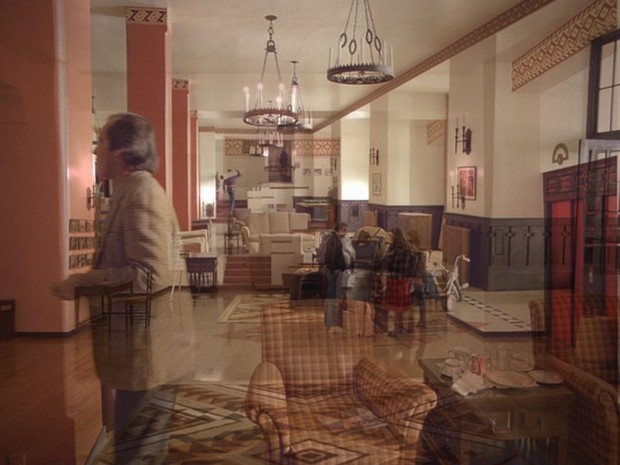
Fig. 10 - Crossfade from the lobby to the Colorado Lounge.
This is an important cross-fade for the viewer. Ullman takes the Torrances on a tour of the lodge, and Kubrick uses the tour as a means of establishing, for the viewer, relationships of important rooms--and all erroneously. With this cross-fade, despite the fact that both the lobby and the Colorado Lounge are on the same level, Kubrick imprints the Colorado Lounge directly upon the lobby in such a way that the stairs of the entry foyer to the Colorado Lounge overlay the stairs of the lobby. We are led to think the Colorado Lounge is likely above the lobby, and to believe that the stairs in the lobby lead up to these, but the Colorado Lounge's stairs only go up, not down, and the relationship is further impossible as the elevator doors overlay the lobby's entrance doors where there are no elebators. The viewer, via this overlay, for the remainder of the film will likely continue to interpret at least those stairs as somehow connecting the lounge to the lobby, imagining the Colorado Lounge to be above the lobby, and it's due this cross-fade and the Torrance's luggage in front of the main door being duplicated here by a group of employees with their luggage in the same position. Even when common sense tells the viewer these lounge steps don't go down, when seeing the stairs in the lobby they will think of them as leading up here. Even despite the elevator being in the wrong place. Even despite the Colorado Lounge's length-wise direction being a 90 degree turn from that of the lobby's in relationship to the stairs. This is all very intentional, as Kubrick accomplishes an overt 90 degree twist of the hedge maze later on in its relationship to the lodge. There are many 90 degree shifts in the film.
As Stuart Ullman, Bill Watson and the Torrances exit the elevator we notice that the arrow is pointing to level L, lobby level. With the use of the elevator here, Kubrick gives the impression that we have come up a level from the hotel's main lobby, but both the Colorado Lounge and the lobby have outside their windows the same low stone walls of a patio and shrubbery beyond them, as if they are on the same level.
The only time we see the interior of one of the red elevators is now. The only time we will see the red elevators used by the Torrances is this instance. We know that they are going up and down and all over the lodge throughout the film but we don't even see the stairs used in normal scenes of the Torrances transitioning from one area to another. Stairs are used in the film but only for two dramatic scenes: the confrontation between Wendy and Jack on the grand staircase in this lounge, and at the end when Wendy is searching for Danny. Kubrick never has the audience experience the suspense of characters in the elevator, wondering what may happen to them, what they might see.

Fig. 11 - The entry to the Colorado Lounge.
Directly prior this, Jack had said he wanted to collect his family and moved in the direction of the green service hall, but Danny is not with them. It's unknown where Wendy might have been "collected" and where she was while Jack was in the lobby with Ullman and Watson. Perhaps she was with Danny and Danny has elected to stay behind.
The map of the hotel slowly being constructed in the mind of the viewer has Jack and Ullman exiting for the Games Room in the direction from which came, on The Interview day, a couple on their way to play tennis, so we believe guest egress is there to other areas of the hotel. We don't know yet that there is no guest hall back here, no guest stairs or elevator, that there is only the service hall and the lobby bathrooms.
The idea of "games" does connect the scenes as here we have a billiard table and in the Game Room we will soon see game tables.
STUART: This is our Colorado Lounge.
WENDY: Oh, it's beautiful!
The individuals surrounding the luggage pick it up and carry it into the elevator. Other employees depart in a seemingly illogical way, climbing the stairs to an upper floor while porting heavy baggage. Why climb stairs to the upper floors when one is leaving? It would seem they would want to continue down rather than up.
Ullman shows Wendy and Jack into the entry to the lounge, where there are a number of the sort of old black and white pictures of past guests on prominent display as had been in Ullman's office. We see in the entry area the poster that reads "Camera Walk" that had been in the lobby on the day of the interview. The "Camera Walk" would seem to be all these photos depicting the history of the hotel.
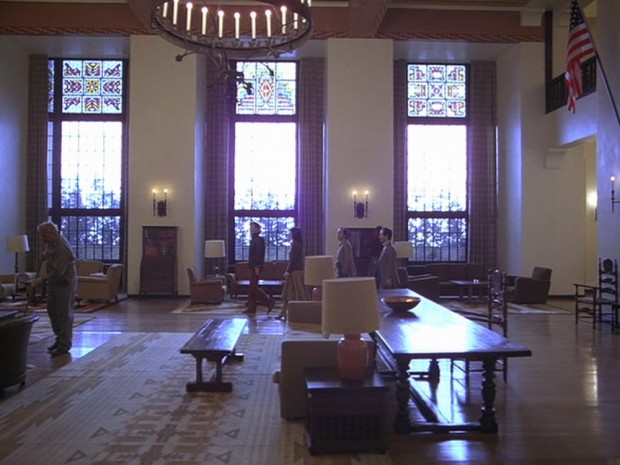
Fig. 12 - The Colorado Lounge.
Passing through the Colorado Lounge, over which an American flag hangs on one side, Wendy exclaims to her husband her enthusiasm for the hotel.
WENDY: My gosh, this place is fantastic! Isn't it, hon?
And it is massive, spacious.
Rugs with American Indian influenced designs cover the floor. The uppermost windows are decorated in stained glass perhaps as well based on American Indian designs. Workmen in gray move furniture from spot to spot as they clean, while one in a plaid shirt and jeans cleans a case near the table which will become Jack's desk.
JACK: Sure is.
WENDY: I've never seen anything like this before.
The group passes before a great long table that is twin to and perpendicular the long table that will become Jack's writing desk. Upon this table rests a natural wood centerpiece which, to my mind, strongly resembles certain carvings of Indians on horseback, but it is also like a Rorschach inkblot in that we may impress meaning and form on it rather than it communicating meaning and form.
WENDY: Are all these Indian designs authentic?
She would be the one to raise this question, Wendy having worn an Indian style beaded belt during the previous Interview section. She also appears to be connected with Morrisseau's painting of The Great Mother.
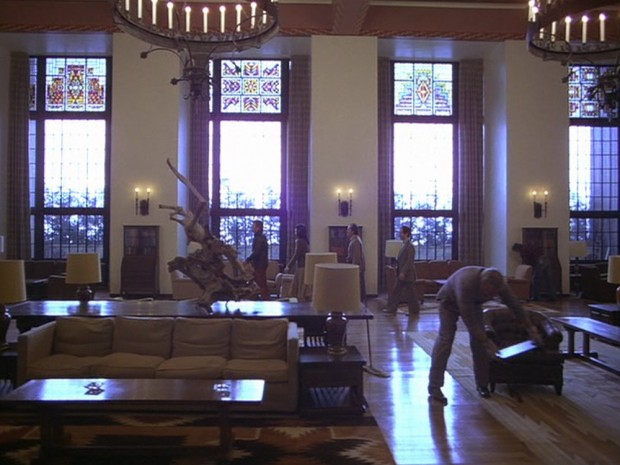
Fig. 13 - The Colorado Lounge and the driftwood centerpiece.
STUART: Yes. I believe they're based mainly on Navajo and Apache motifs.
(20:59. There may be a sha sound.)
WENDY: They're really gorgeous.
They pass by the grand staircase also lined with photos, cleaning crew vacuuming a side sofa, another workman descending the stairs carrying a rolled carpet over his shoulder.
WENDY: As a matter of fact, this is probably the most gorgeous hotel I've ever seen.
STUART (laughing): Oh, this old place has had an illustrious past. In its hey day it was one of the stopping places for the jet set even before anybody knew what a jet set was.
Thus he acknowledges its best days may be in the past, that the stature of the hotel has declined.
Before continuing, I'll insert a couple of J. W. Kern's pictures showing the Ahwahnee Hotel lounge upon which the Colorado Lounge is based.
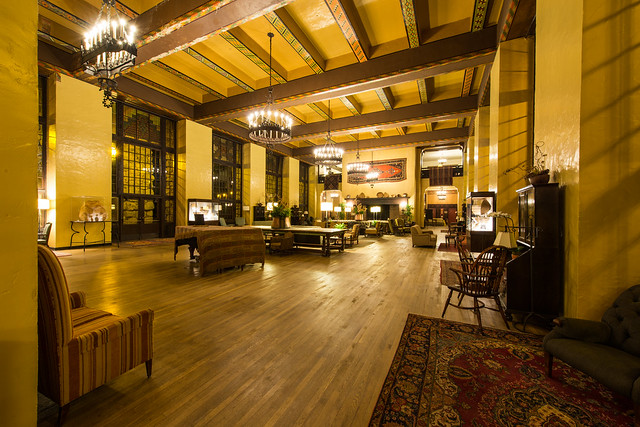
Fig. 13b The Ahwahnee Hotel, photo by J. W. Kern. Use according with Creative Commons.
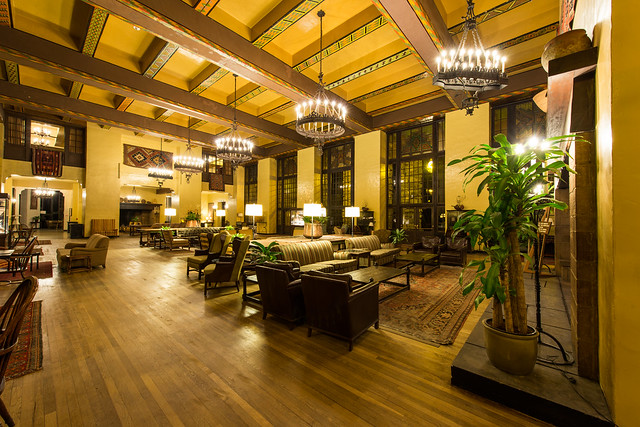
Fig. 13c The Ahwahnee Hotel, opposing view of room on which the Colorado Lounge was modeled. Photo by J. W. Kern. Use according with Creative Commons.
For more great images, visit J. W. Kern's page on the hotel at the blog, The Golden Sieve.
One will immediately notice that there is no grand staircase in the room upon which the Colorado Lounge was based. Kubrick dispensed with the fireplaces at opposing ends and had one instead to the side. He took away all the doors with stained glass lining the long walls and replaced them instead with only the stained glass windows. He opened up the view to the floor above. What unites both the Colorado Lounge and this room in feel are the windows and their stained glass, the white walls contrasting with the dark woodwork,, the ceiling beams, a similar style in the woodwork of the balcony, the writing desks lining the wall and the banquet tables.
Moving along into a rear hall with a gigantic fireplace (one can perhaps see in its cavernous dark an allusion to the tunnel), a portrait of an American Indian with buffalo headdress hangs opposite it.
Ullman continues.
STUART: We had four presidents who stayed here, lots of movie stars.
WENDY: Royalty?
STUART: All the best people.
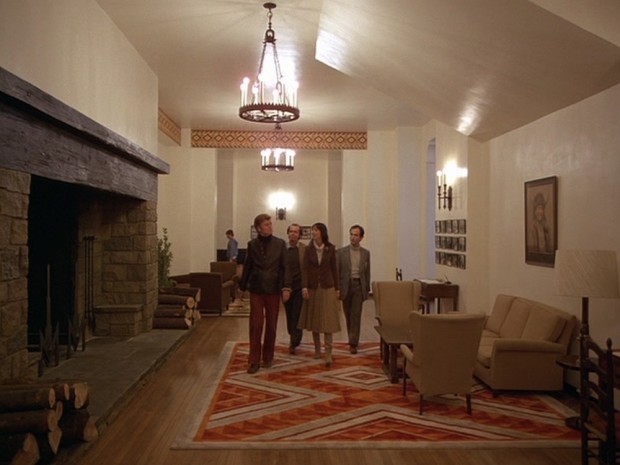
Fig. 14 - Behind the grand staircase at the rear of the Colorado Lounge.
All the best people. You've your general flotsam and jetsam and then the best of people, the privileged cream at the top who are accepted as the "best". It's a recurring theme in Kubrick's films, this examination of social class.
Though the American Indian with the bison headdress is in keeping with the American Indian theme, I would hazard that here we've also an allusion to the half-bull, half-man minotaur.
At the far end of the hall behind the grand stairway, as Ullman and the Torrances progress toward the camera, people appear to pass from right to left via a passageway in the background, but there appears to be no "there there" to the right, the structure of the lodge doesn't seem to allow for it.
THE GAME ROOM, THE MONARCH SKI POSTER AND THE MINOTAUR
A companion piece to this section is Remembrance and Repetition in "The Shining", which is on Danny in the Game Room and the relationship of the action in there to 237. Preferably, it should be read now or after this section on the Game Room. Most significantly, I discuss in it how we can find 237 on the dartboard.
103 CU Danny zooms out to MS. (21:23)
Cut to Danny still in the game room, throwing darts with red tails, a piercing high pitched noise entering that drills the ears and informs to be on the alert for something weird, music cues delineating for the audience what is strange and what is not. A number of oddities have passed by, unnoticed, because they didn't have the musical cues to tell the viewer, "This is odd."
An American flag hangs on the wall in the background. Again, there are historic photos of the lodge all around. We see pool tables and odds and ends chairs and sofas lining the walls. We've observed the prominence of the American flag, but now we view another flag of two blue stripes bordering a central white one, and overlaying these a yellow orb that is partly encircled with a red C shape, which is the Colorado state flag.
Jack had said he would collect his family, but in the Colorado Lounge he was seen only with Wendy, so Danny may be implied to be in some way present as well if the Game Room is connected with the Colorado Lounge in a psycho-spatial way. The entry to the Colorado Lounge had also a pool table, and the Colorado Lounge had a piano, just as there is a spinet in here and gaming tables. The hall behind the Colorado Lounge had a slanted ceiling formed by the grand staircase above it, and the way we've cut to the Game Room from the scene of the Torrances, Ullman and Watson passing under the grand staircase in the rear hall of the Colorado Lounge, we've retained the slanted ceiling on the right, for the Game Room has a slanted ceiling on the right as well.
The Game Room is only viewed this once and its position never established in the hotel. However, the slanted ceiling in this room, due the exterior architecture of the lodge, may lead us to reason that we are perhaps above the garage in which the Snow Cat is kept. The Game Room "feels" like it would be above the garage, but it is not. It has no windows, which is odd. No windows at all. It is an internal space.
One could possibly view the picture of the American Indian in a bison headdress, under the slanted ceiling beneath the grand staircase, as having been replaced here with the dart board in which there is a bull's eye.
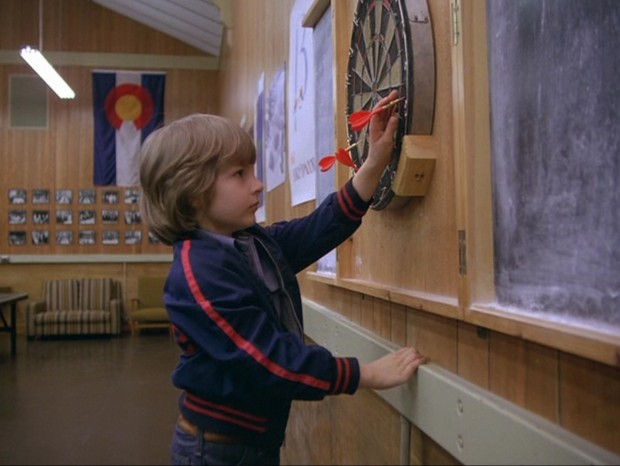
Fig. 16 - Danny plays darts in the games room.
At home, Danny had been standing on a stool looking into the mirror when he went into his trance. I had made a connection with the story of Jacob's dream as Jacob's ladder music had been playing over that scene. Here, Danny climbs onto a stool in order to pull the darts out of the dart board. We briefly see part of a word on the back of his jacket, the letters LYERS. The high pitched noise becoming more shrill, Danny turns, as if feeling there is something else in the room.
The camera quick zooms in on his eyes.
104 MS two girls. (21:47)
Then cut to a shot of the two girls standing, hand-in-hand, inside the door to the game room, an EXIT sign over their heads. On their right is a bucking bronco poster over a water cooler, a phone booth, a mountainous landscape, and on their left a cigarette machine and a picture of the silhouette of a seeming skier with the sun behind him and "Monarch" below in red lettering. Further left is an image of a barn but I can't see the lettering, and before this a clothes rack with a circular (wheel) head. There are green-covered game tables in the foreground on the right and seating around another low table to the left.
We see also a phone booth. When the girls had first appeared to Danny, not only had the Carson City movie been playing on the television, but Wendy had been on the phone with Jack, he giving her the news of his getting the job. Here, again, we've a prominently placed phone.
105 CU Danny. (21:53)
Danny stares at the girls.
106 MS two girls. (21:57)
The girls turn and smile at each other and exit. A roar of sound peaks and is replaced with strings.
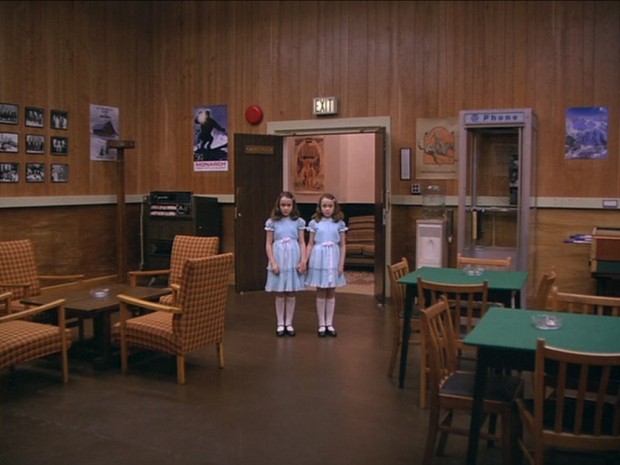
Fig. 17 - The two girls appear in the games room.
107 CU Danny. (22:10)
Danny watches as they exit.
 104 |
 105 |
 106 |
 107 |
Whew, that's over, and the music, Legeti's "Lontano", informs us it's over. Wipe the brow. Nothing bad happened. We were given enough time to see the girls and have it register that they aren't quite exactly alike, but that's a little thing. And, besides, they're not supposed to be twins, right? They're supposed to be sisters, 8 and 10 years of age. Yet Kubrick has crafted this subtle disorientation so that one is going to think of them both as twins and sisters who are 8 and 10 years of age, unable to resolve the conflict, and so holding both in mind as being truths about them. Kubrick set it up to be this way and one's too absorbed in the unfolding of the lodge and the story to think much about the how and why of the dissonance.
John Bourassas, of Gottfromnaught has made a tenative identification of the poster in the hall that is prominently stationed between the two girls. He thinks it is possibly a poster for the 1912 National Western Stock Show, and that the poster may show the platform between the two trains of the Denver Union Station. He states that in the foreground on the right may be possibly seen the back of a person on a horse, people about the platform, and that the gray mass in the top third perhaps represents mountains. If this is so, we have both the train and bull (cattle) in this very background poster, just as in other scenes we have the train and the bull (or cattle, bison) as background elements. The train figures as a background element in Kubrick's A Clockwork Orange and Eyes Wide Shut as well. One can read more about that here.
John has positively identified the poster on the far left as being for La Maison de la Glisse, a sports oufitting store in France. The poster shows, beneath the lettering, the silhouette of a paddler in a canoe. Below that is a barn or lodge and below that two ski-dooers.
La Maison de la Glisse, The House of the Slide (or sports such as skiing), would seem to foretell Danny's sliding down the bank of snow outside the bathroom window in his escape of the bathroom. We shouldn't forget, however, that preceding this we have Jack's tumble down the staircase, which may or may not anticipate Danny's own slide, which is successful and he is unharmed.
One wonders if the canoes may eventually connect with James Edward Hervey MacDonald's "Mist Fantasy", a painting in which we see two canoes that will become readily visible in shot 345 as Jack walks down the hall toward the lobby and its elevators and is confronted with balloons and party music.
The "Monarch" poster is interesting. The lodge is in the mountains and the poster is, I think, intended to suggest a skier with the sun behind, but the body is wrong, the chest seems too large, and the legs seem odd . We have already been told that skiing is of no importance to guests at this lodge as it isn't a winter retreat, yet the games room is lined with winter sports posters, including this one very prominently placed. No, to my eye the figure on the poster has always suggested the hybrid Minotaur, which is perhaps confirmed with a few other surrounding images. And if we return to the Colorado Lounge and look at the great driftwood centerpiece we can even see a similarity in the upward reach of both.
I'm not saying that the poster is literally of a minotaur. No. Kubrick periodically has in his films images that can be read alternative ways, that can be suggestive of other things. I think this is one of those times and that the poster on the other side of the Game Room door gives a clue as to how to interpret this poster.
On the other side of the door is the picture of a man riding the bucking bronco. One can think of it as man and animal here merged into one, complementing the skier-minotaur image.
We've the same with the picture of the American Indian in the buffalo (bull) headdress in the hall behind the Colorado Room, under the grand staircase, a merging of human and animal spirit.
This story concerns a maze and though there's a difference between a maze and a labyrinth, in the popular mind they have melded. If, with the story of the flood, in some myths there is the shapeshifting/polymorphing from human to wolf, with the labyrinth comes the minotaur, a creature which is part man and part bull.
In my analysis of Kubrick's first film, Fear and Desire, I write on how it borrows from Shakespeare's The Tempest, and how the horse in the credits relates to Caliban who at one point in The Tempest is confused with a man on horseback. Shakespearean analyses relate that men on horseback were mistaken as a centaur by American Indians. Caliban is imagined as a hybrid of man and animal, and is also referred to as a moon-calf, which Shakespeare links with the Minotaur in Midsummer's Night Dream. Indeed, Caliban, which is thought to have been made up from the word "cannibal", may be the reason that cannibals are discussed on the drive up. For more on this see the credits section of my analysis on Fear and Desire.
There is a Monarch Lodge ski resort in Colorado, and this would be the place to which the poster refers, though I've not yet found a vintage poster of this type for the Monarch. Monarch Pass is located on the Continental Divide, just as I've established that the Overlook is located on the Continental Divide via the approaches to it in the Shining Mountains in Montana. Monarch Mountain/Pass is off Highway 50, and is accessed by County Road 237, which also crosses the Continental Divide. The old Monarch Pass was built in the 1880s. The new one opened in September of 1921. Google Maps states it takes 3 hours to get to Monarch Pass from Boulder. Jack had driven from Boulder to the Overlook in 3 hours. The Overlook is closed for the winter, but its sibling or counterpart seems to be set up to be this Monarch Pass. Monarch was originally the name of a mining camp in the area, and the name carried over to the pass. How it acquired this name isn't known, and is suggested it could either come by way of the Monarch butterfly or gold miners hoping to live like royalty. The Monarch Lodge, built in the 70s, an unappealing place in comparison with older resorts built in connection with the WPA, has no accompanying lake, as does Mount Hood and the Overlook's mountain.
I've been unable to locate a Monarch skiing poster, but a 1960s one for Vail, if flipped horizontally, is very similar. We can tell from it that the white cloudiness in the background of the Monarch poster would be a puffy cloud of snow left by the skis.

1960 Vail poster compared with The Shining's Monarch poster
Coincidentally, a Rainbow Route, for a time, in the 1920s, was connected with Monarch Pass.
A section of road, referred to as the Rainbow Route, connected the Front Range and Western Slope running from Salida across Monarch Pass and into Gunnison. That road, known today as U.S. 50, continued from Gunnison along the Gunnison River Valley, crossed Cerro Summit and dropped into Montrose.
Source: https://www.montrosepress.com/the-rainbow-route
I read the Rainbow Route initially opened in 1916, and that in 1921 it reached the Continental Divide at Old Monarch Pass. By the 1950s U.S. 50 had incorporated it.
There was also once a Monarch-Agate Pass that was built through pioneer graveyards.
The Monarch-Agate Pass road was built with some protest from citizens on the eastern slope of the pass. The highway engineers had decided that the highway had to be built above the towns of Arbourville and Garfield to catch more of the sun’s rays. This meant the highway had to be built over and through their cemeteries.
Frank Gimlett, a former proprietor of the Salida Opera House and writer of a series of paperback books called Over The Trails Of Yesterday, was greatly disturbed about the highway department’s decision. He claimed in one of his books (Book Six) that the highway department with “fiendish glee” dug up and crushed the bones of departed pioneers in the middle of the night. The highway department, Gimlett claimed, did not want to bother with careful removal and relocation of the cemeteries. Gimlett proclaimed the Monarch-Agate Pass highway to be “The Ghost Highway Of The Rockies.”
Cozine.com, How US 50 came to pass through Central Colorado
Wendy had asked if royalty had stayed there, and Stuart had somewhat evasively replied the best people had. Now in this scene an answer is provided with the minotaur as Monarch, who in myth was the son of Queen Pasiphae and a Cretan Bull that King Minos was supposed to sacrifice to Poseidon but had instead elected to preserve. Pasiphae, daughter of the Sun, Helios, and wife of Minos, fell in love with the bull and copulated with it. The result of the union was the Minotaur, who Minos secreted away in a labyrinth built by the great architect and craftsman, Daedalus.
The temperament of the Minotaur perceived as passion unbridled by human reason, the 7th circle of hell in Dante's Inferno housed the violent and was guarded by the Minotaur. To approach this hell, one went through a mountainous region. Through a valley below ran a river of blood.
Passion unbridled by human reason sounds very much like Jack, at least the character into which he fully transforms as the movie progresses. The mountainous region recalls the mountains in which the lodge is situated, and the river of blood recalls the river of blood which pours out of the elevators.
CANTO 12 The place where to descend the bank we came Was alpine, and from what was there, moreover, Of such a kind that every eye would shun it.
Such as that ruin is which in the flank Smote, on this side of Trent, the Adige, Either by earthquake or by failing stay,
For from the mountain's top, from which it moved, Unto the plain the cliff is shattered so, Some path 'twould give to him who was above;
Even such was the descent of that ravine, And on the border of the broken chasm The infamy of Crete was stretched along,
Who was conceived in the fictitious cow; And when he us beheld, he bit himself, Even as one whom anger racks within.
My Sage towards him shouted-:"Peradventure Thou think'st that here may be the Duke of Athens, Who in the world above brought death to thee?
Get thee gone, beast, for this one cometh not Instructed by thy sister, but he comes In order to behold your punishments."
As is that bull who breaks loose at the moment In which he has received the mortal blow, Who cannot walk, but staggers here and there,
Thus down we took our way o'er that discharge Of stones, which oftentimes did move themselves Beneath my feet, from the unwonted burden.
Thoughtful I went and he said:"Thou art thinking Perhaps upon this ruin, which is guarded By that brute anger which just now I quenched.
Now will I have thee know, the other time I here descended to the nether Hell, This precipice had not yet fallen down.
But truly, if I well discern, a little Before His coming who the mighty spoil Bore off from Dis, in the supernal circle,
Upon all sides the deep and loathsome valley Trembled so, that I thought the Universe Was thrilled with love, by which there are who think
The world ofttimes converted into chaos; And at that moment this primeval crag Both here and elsewhere made such overthrow.
But fix thine eyes below; for draweth near The river of blood, within which boiling is Whoe'er by violence doth injure others."
Source
The original Timberline was decorated with buffalo heads and Paul Bunyan and his blue ox, Babe.

Source: http://www.loc.gov/pictures/item/or0356.photos.044769p/
Above, on the East wing, just right of the garage doors, is a buffalo head carving. Below, on the ground floor in the west hall, is a mosaic of the giant Paul Bunyan with his ax and his blue ox, Babe.

Source: http://www.loc.gov/pictures/item/or0356.photos.044806p/
I have been raked over the coals for feeling there is in the skier a suggestion of the Minotaur. Whether or not it is suggested (and I feel that it is for reasons outlined above), the Minotaur is a central part of the story of the maze/labyrinth, and Kubrick's interest in Minotaurs and mazes was evidenced early on, such as in Minotaur being the name given the production company for his film Killer's Kiss. Again, just before the gaming room we observed the picture of the Native American with the bison headdress, and paired with the skiing poster is the cowboy, suggestive of the cow and man hybrid.
OTHER BUTTERFLIES
Kubrick's A Clockwork Orange opens with Purcell's "Funeral Music for Queen Mary"". Her husband was William III of Orange, and it is William for whom the Monarch butterfly is supposedly named.
Butterflies were briefly observed in Kubrick's Lolita, a frame of specimens at the wall of Camp Climax, seen when Humbert is picking up Lolita, subsequent her mother's death, which is when he discovers that the camp hasn't only girls but that Charlie, the son of the camp's matriarch, lives there as well.
Nabokov's unused screenplay for Lolita had him making an appearance as a butterfly collector.
From my Lolita analysis:
Butterflies make a couple of appearances in the screenplay. At one time Humbert and Lolita go to the top of a mountain to a place where "tourists take pictures and feed the marmots". The roads are described as "serpentine" and the car "snakes" its way up them. Eventually, the car stalls at a steep incline. "The radiator grill is plastered with dead butterflies." The next scene is a canyon where they have attempted to take a short cut and become lost. Lolita suggests they stop and ask the "nut with the net" for directions. He's a butterfly hunter, and Nabokov had envisioned himself as making a cameo appearance as the hunter. Humbert asks if he could tell him if the road leads to Dympleton, but Nabokov says he hasn't the foggiest idea and suggests he talk to some loggers further on. I suspect that Nabokov was referring, with Dym, to the dim-mid formula laid out during the reading of Poe scene, "foggiest" seeming to echo the "misty mid regions". The twists and turns Humbert said were found in the dim-mid word play can be seen in the serpentine roads up which the car snakes.
If I remember correctly, that mountain meeting was supposed to have occurred in Colorado.
The common Monarch butterfly is of the species Danaus plexippus. Plexippus was the son of Aegyptus, a twin brother of Danaus, and his name means "one who urges on horses", as in a "rider". Plexippus married Danaus' daughter, Amphicomone, but was killed by her on their wedding night as one of the 49 of 50 Argive sons of Aegyptus killed by the Danaides, the daughters of Danaus, as ordered by him. The punishment suffered by the Danaides was to carry water in a sieve to the bath intended to cleanse them of their murderous sin, representing the "futility of a repetitive task that can never be repeated" (see Wikipieda, Daughters of Danaus), as we also find in the myth of Sisyphus doomed to perpetually roll his boulder up a hill.
We also observe a frame of butterfly specimens on the wall of Sharky's (where the Rainbow was located) when Bill enters with the "Lucky to be Alive" newspaper and orders a cappuccino. A requiem was playing.
THE BLACKBOARDS
This section is inessential reading that has all to do with cross-analysis with A Clockwork Orange.
Blackboards are on either side of the dart board in the game room. The blackboards in A Clockwork Orange are used peculiarly and so I'll make a note of them here, because one can see a couple of parallels with The Shining.
In A Clockwork Orange we have a hidden blackboard at the HOME of Alexander which was revealed when Alex tore down the bookcase behind the author's desk:

Fig. 19 - A glmpse of the hidden blackboards in "A Clockwork Orange".
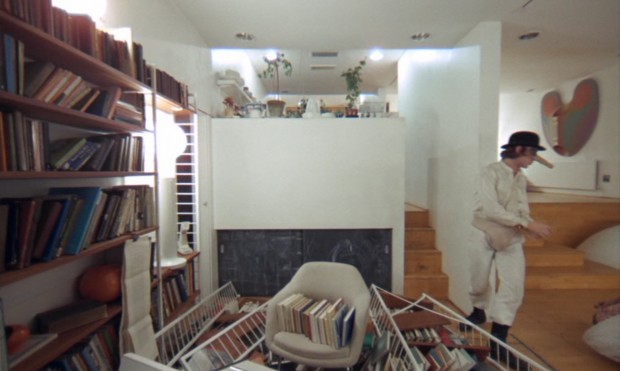
Fig. 20 - Alex topples the bookcase, revealing them.
Then, we later have blackboards appearing in the prison scene, behind the altar.
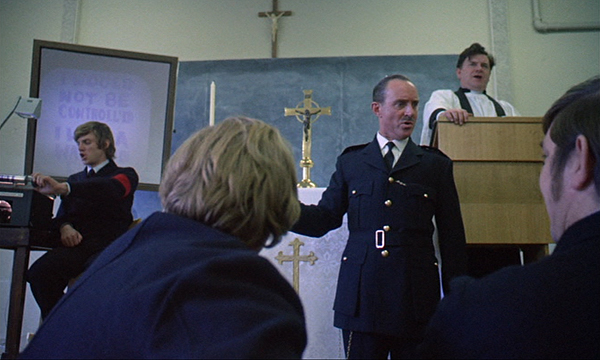
Fig. 21 - Alex before prison blackboards in "A Clockwork Orange".
In this scene, Alex is scrolling through the lyrics for the hymn they are singing:
I was a wandering sheep, I did not love the fold, I did not love my shepherd's voice. I would not be controlled. I was a wayward child, I did not love my home. I did not love my Father's voice, I loved afar to roam.
Delbert Grady and Jack both speak of Danny in much the same language with which society reviles Alex--though Alex, of course, is a criminal, whereas Danny is instead described by Grady as the willful, disobedient one in need of severe correction. If we know both films, we're already going to be aware of this, but comparing the images of Danny before the Game Room dart board, and Alex before the blackboard, some similarities are especially striking, such as the red band Alex wears around the arm of his prison uniform perhaps reminding of the red bands that run down Danny's sleeves.
Kubrick has used the music "The Awakening of Jacob" to inform The Shining, and in the above prison scene the chaplain is also making mention of Esau and Jacob, telling the inmates they are idiots who have sold their birthright for a saucer of cold porridge, the thrill of theft, of violence, and the urge to live easy.
I note in that section of my analysis on A Clockwork Orange:
Throughout his experience in prison, Alex wears a red band around his left arm. Whatever this means (and I would think it has meaning within the system), it's interesting it occurs here in conjunction with the story of the twins Esau and Jacob and Esau selling his birthright. Esau is associated with the color red, and in another story of twins, when Tamar is giving birth the midwife wraps a scarlet thread (ShNI, scarlet, while another form of ShNI means to double, ShNH) about the wrist of the child who first stuck out his hand, but then that child, Zerah (rising or light, which I think is connected with the Zohar and mystic light), withdrew his hand, and the younger twin, Perez, was born first. The thing is that the thread may be scarlet but via the twins we have a doubling, a "second time", and we have in Kubrick's work many doublings and repetitions.
In both The Shining (in which, I think Kubrick may have made word play with ShNH) and A Clockwork Orange we have the characters of Alex and Danny who have been essentially earmarked for destruction and both wear the red bands. Alex ultimately attempts suicide, after his rebirth as the Perfect Christian, via what could be called a flying leap from a window, and is reborn yet again. He, and Danny are both the heroic survivors in their tales--for, yes, though Alex is abominable, he is the "hero" of his story through his travails.
The dart board between the two blackboards recalls the blackboards of A Clockwork Orange placed behind the altar with its crucifix combined with eternal circle/sun. One could even hazard that in Danny's darts we have an approximation of the nails of the cross, which may sound like a long shot, but there are enough resemblances between The Shining and A Clockwork Orange that I don't think making such a comparison is out of place--and A Clockwork Orange explicitly explores, with Alex, not only the barbarism of the worship of the blood of the crucified Christ but the fact that the necessity of a crucifixion demands also the predetermined necessity of one who would perform the sacrifice, and doesn't Alex seem just the person to do it, having the dancing Christ in his bedroom, and then in prison passing himself off as a reformed acolyte even while daydreaming that he is scourging Christ, before becoming himself a Christ figure, the Perfect Christian created via the Ludovico Treatment with Serum-114.
Notice in the A Clockwork Orange image of the blackboards uncovered by Alex in Alexander's home, how they are oppositional in nature, the left one covered with squares and the right with circles. I have played with the notion of perhaps seeing in them a glyph for Jacob's Ladder as the Tree of Life, which is formed of three pillars, essentially the idea of opposites which find unity in a central pillar.
The Christ death and resurrection story is explicitly associated with The Shining by Kubrick himself, through his use of music celebrating the death and resurrection of Christ in the 4 P.M. section. But he gives an alternate read on it as, paired with the horrifying story line, many people not knowing what the music is, responding to it through their Christian roots, not being acquainted with the composer and his style, believe it instead to be diabolical and associated with a Black Mass as it sounds to them to be eerie, dark and discordant. They've a cultural prejudice that inclines them to hear the music in a way that is in opposition to its intent. What we believe we see and hear with Kubrick is not necessarily what is transpiring.
SUITE 3 AND THE MOVING SHOWER CURTAIN
Now that Danny's met the Overlook's potential playmates, of whom Groucho Marx would quip, "I don't want to belong to any club that will accept me as a member", how are his parents getting along with their tour?
108 MS Staff wing hall. (22:16 )
Ullman now shows the Torrances around the staff wing of the hotel. Bill Watson isn't with us for this part of the journey but we scarcely notice as his role is to trail behind all saying nothing.
Where is Bill Watson? Again, we feel some discordance in our time line. In the lobby, Ullman had sent Bill to have the Torrance's luggage carried up to their suite, and Jack and he were going to collect Jack's family for a tour of the hotel. Next, we saw Bill with Jack and Wendy and Stuart for the tour of the Colorado Lounge but not Danny. Now, we are about to see the Torrance's suite, but Bill is not with us, Danny is not with us, and we won't observe the Torrance's luggage in the suite. It's like a continuing build of little irritations, things just always a little off kilter.
Stuart, Jack and Wendy progress down a cramped blue hallway that has blue utilitarian carpet over worn floors. Thin mattresses are draped over a banister rail, and older odds and ends furniture from the Overlook's past are stacked here and there against the walls. At the far end of the hall is an EXIT sign and the blue flowered wallpaper we had previously seen associated with the two girls in Danny's vision while in Boulder, so it is notable that we go from the two girls under the EXIT sign of the game room, who had turned and left, and move directly to this scene. It is also obvious that the Torrances and Stuart have entered this wing via the blue flowered hallway.
As the movie has set it up that they have come to this wing via the Colorado Lounge, and not the lobby, the viewer would assume that this must make logical sense, and logical sense that the blue flowered hall is part of a reasonable path.
STUART: This is the staff wing of the hotel.
As if in excuse for lodging the Torrances in the decidedly not-very-elegant staff portion of the lodge, he adds...
STUART: None of the other bedrooms are heated during the winter.
WENDY: Oh.
Wendy, who had been cheery up until now, realizing that this wing is where is their home for the winter, is quietly shattered, her face falling.
This section's jokes are for those who know to put on an apron when their boss invites them to a party, because they've lived in Suite 3. If you haven't lived in Suite 3, you will not get the joke on Wendy and Jack
As Ullman lets Jack and Wendy into their apartment, two young female employees depart. Heading down the stairs, they call their regards to Stuart.
TWO WOMEN: Goodbye, Mr. Ullman!
STUART: Goodbye, girls!
This is the second of the two interactions we shall see between Mr. Ullmann and the departing employees (other than Dick), the first being the byes exchanged with the two women who were earlier entering the lobby with their luggage, and now these two. The two women then continue down the hall seemingly in the direction of the blue flowered hallway and its EXIT sign, and just as Danny turned and saw the twin girls, here it is Jack who turns and stares at the two young women. The women likely go down the staircase to the left, but the scene cuts off before we see this.
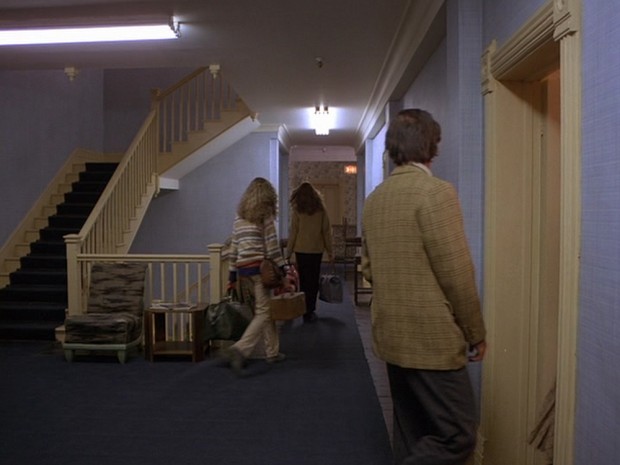
Fig. 22 - Jack looks down the hall as the two women depart.
Below is a diagram of the Torrance's apartment and its environ, including where the two girls appear to Danny in their death scene, as best as I've been able to establish it.
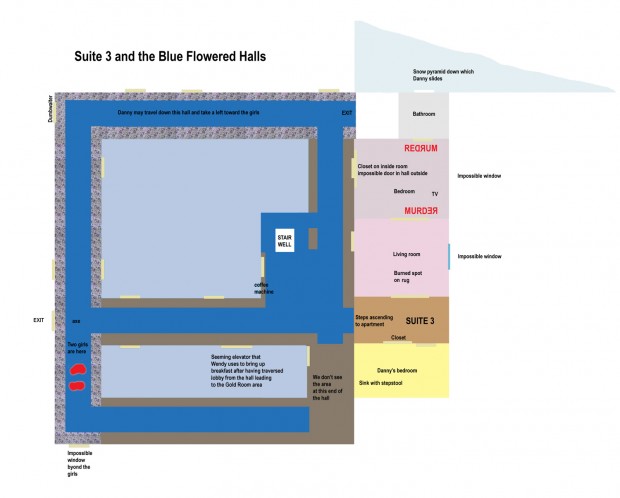
Fig. 23 - Suite 3 and what I can gather of its floor.
As Jack stares after the young women, Ullman has entered the suite and continues with the tour. In the way that Jack does stare at them, we are inclined to think of him as being attracted to them, checking them out, and that this is suggestive of a dissatisfaction with Wendy and his marriage.
STUART: And here are your quarters...
109 MS Suite 3. (22:29)
Ullman ushers the Torrances up a short flight of steps into a small apartment decorated with old wallpaper, furnishings and the color scheme of a bygone era. It's not a bad little apartment, certainly not by '70s standards--I lived in similar, and dense urban dwellers now would be happy with its size and its bones--but it isn't in the grander style the Torrances were expecting. They imagined they would live in relative luxury and instead find that their apartment in Boulder was more spacious than their quarters.
STUART: Living room, bedroom, bathroom, and a small bedroom for your son.
First, why inside this apartment are there stairs leading up to the living quarters, placing this suite on a level several steps above the floor? The bedroom and bathroom in Room 237 are several steps above floor level, which makes no sense architecturally there, either.
Next, the doorway to the living room is actually two doorways, a later one (the double doors) set within the first. More doubling, and more of the thing doubled being not quite like the other. The installation of the "double doors" is itself a reference to the doubling.
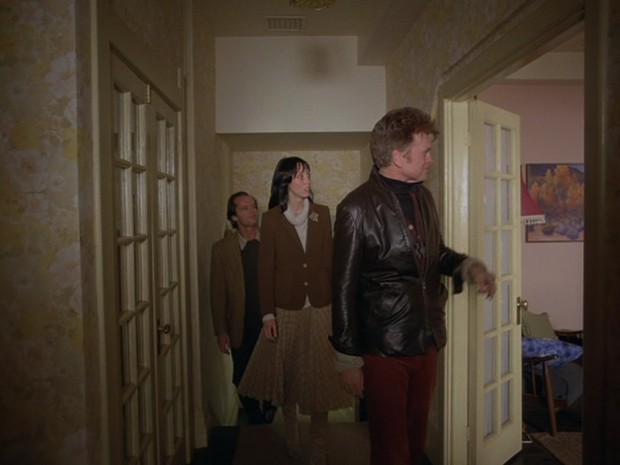
Fig. 24 - The inset doorway to the sitting room in Suite 3.
The entry hall to the apartment is wallpapered with a dated, sunny yellow flower print, and as this is a heated area while the rest of the bedrooms are not, the suggestion is perhaps that here is summer in the midst of winter, something which we'll observe again later, inseparable opposites.
In the child's yellow painted bedroom is an illustration of two bears. The mattress of the bed is decorated with flowers. Next to the bed there is a sink set into the wall and a stool beside it, reminding of the stool Danny had used to climb to reach the lavatory and medicine cabinet mirror in the Boulder apartment, where he'd had his first vision of the girls, and the fact that Danny had just climbed upon something in the game room to reach the dart board, at which point he'd again seen the two girls in blue.
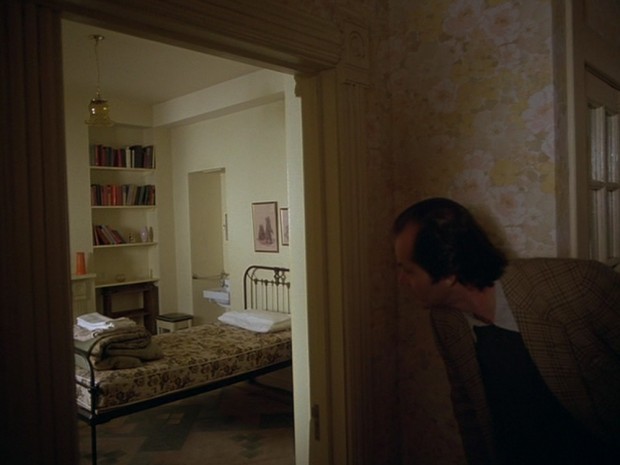
Fig. 25 - Jack checks out Danny's bedroom.
JACK: Perfect for a child.
Jack grins, as does Wendy, unenthusiastically, she and Jack moving into the living room with its old refrigerator, the bedroom just beyond separated from the rest of the apartment by a curtain, this area painted a dull pinkish color.
We don't yet see them but the room appears lit with natural light from windows in the right wall.
STUART: Well, uh, the place is very nicely self-contained, easy to keep.
Even Ullman must search for words to dignify the apartment as an agreeable place, aware that it isn't.
Jack and Wendy have stepped into the bedroom where a painting on wood of the mountain in summer, viewed from a spot across a lake, hangs above the bed, perhaps based on Mount Hood as viewed from beyond Mirror Lake, as seen outside Ullman's office. Jack tests the blue and white flowered mattress, pressing on it.
JACK: Cozy.
Which is how, in the later Eyes Wide Shut, Dr. Harford will describe the apartment of the prostitute he visits, as he struggles for a comment he considers not too insulting in that particular culture/class shock clash. The Torrances, too, are a far rung down the ladder from the Harfords, and this space is a considerable step down from the more luxurious guest quarters. The message is made they are servants, employees, and as such they do not obtain any of the privileges of guests.
STUART: Yes, very cozy for a family. And if you feel like spreading out you have the rest of the hotel to move around in.
In the background, throughout this scene, we hear disembodied echoing steps and movement from elsewhere in the hotel. We know it's to do with people cleaning, employees departing, but there is a lingering sense of unseen spiritual forces.
Jack and Wendy step into the bathroom. Though Jack doesn't touch it, we note that the shower curtain moves, and there doesn't seem any reason for this. One thinks perhaps Jack passing by the curtain has breezed it, causing it to move, but I don't believe that's the case. Instead, the movement highlights the importance of the bath and its curtain and the idea of paranormal action independent of any real physical cause, helping to set up the later confrontation in Room 237. Briefly, Jack stares at the shower curtain, a foreshadowing of that encounter when he enters the bathroom of 237 and is at first uncertain whether there is an individual behind the curtain, but then the woman reveals herself, drawing the curtain back.

Fig. 27 - Jack and Wendy in the bathroom of Suite 3.
JACK: Well, it's very homey.
We know from later scenes where the window to the bathroom of the apartment is located in relationship to the building, and its position makes impossible all the other windows of the apartment, just as the window of Ullman's office is an impossibility. The other windows of the apartment will later be revealed as impossible as they are in an interior wall. But we, as the movie audience, don't know this yet and won't know this until the scene in which Danny escapes out the bathroom window. Only then will we know where this suite is in relationship to the rest of the hotel, at which point we'll see that it is physically impossible for this apartment to have any windows but the one in the bathroom.
Could this be the suite in which the Grady family stayed? We're given no indication but it likely is. Later in the film, after Grady mentions one of his daughters tried to start a fire, we see what appears to be a hole in the sitting room rug of the suite, perhaps made by a burn.
THE MOVING SHOWER CURTAIN AS CONFIRMATION OF INTENDED MOVEMENT OF OTHER OBJECTS RATHER THAN JUST NORMAL CONTINUITY ERRORS
Much is made by people of the Game Room chairs having moved when the camera shifts from the girls to Danny, then to the girls again. Thought I'd prepare a gif of it. Not a very good gif, but never mind that.

Fig. 28 - In the games room we've a shot of the girls, one of Danny, then the girls again.
Above, cutting out the intervening scene of Danny looking at them, the moving articles in the games room.
Here is a not very adept gif of the moving shower curtain (refresh the page if one of the gifs doesn't appear, which sometimes happens)...
Fig. 29 - The moving bathroom curtain in Suite 3.
As well as the disappearing table and chair in the Tuesday section.
Fig. 30 - Cutting out the close-up on Wendy between these two shots of Jack in the Tuesday section, the disappearing chair and end table.
There are likely to be real continuity errors, but there are many that seem purposeful rather than accidental, enough to warrant looking at the myriad continuity mismatches to see what's up with them.
One of the more blatant seeming continuity mismatches that is obviously purposeful is the reversal of the carpet beneath Danny in the Wednesday section. But then there's the shower curtain, which is a perfectly natural movement of fabric, though without any perceivable reason, and we watch as it huffs and puffs, breathing in and out, in one long shot. The shower curtain's movement not only foreshadows the later encounter in Room 237, my belief is one could take it as commenting on a number of the continuity mismatches, confirming them as intentional. As many odd continuity problems appear not only in this film but in other Kubrick films, they're not a matter of simply creating a paranormal atmosphere in The Shining, suggesting the lodge itself is alive, though this impression is communicated. The continuity problems are part of Kubrick's method.
With the moving shower curtain, we do have a great joke, the manner in which Jack looks at it, as if he is perplexed yet consciously unaware of his own perplexity, confronting again the camera to say, "It's very homey," while Wendy, too, takes a passing-over glance of the curtain.
THE INTRODUCTION TO THE FAMOUS HEDGE MAZE - OUR FIRST VIEW OF HOW THE MAZE DOESN'T BELONG THERE AND HOW THE STUDIO SET IS ENTIRELY DIFFERENT FROM THE AERIAL VIEWS
110 LS exterior hedge maze. (23:09 Crossfade to the exterior maze begins and ends at 23:13.)
Crossfade to Ullman outside the lodge, birds tweeting, introducing Jack and Wendy to their famous hedge maze, which is massive, and really stands as a metaphor for the maze of the hotel itself and the disorienting fashion in which it is being introduced to us.

Fig. 31 - Ullman takes Jack and Wendy on a tour outside the lodge.
Bill Watson with them again, the group is traveling from right to left, heading back toward the lodge as they pass before the entrance to the maze. Which makes not one single bit of sense. Where have they been that took them beyond the maze? If the audience imagine the maze is behind the Overlook, what is past the maze supposedly but mountain face dropping off into timber? We shall deal with this later.
STUART: This is our famous hedge maze. It's quite an attraction around here. The walls are thirteen feet high and the hedge is about as old as the hotel itself. It's a lot of fun but I wouldn't want to go in there unless I had an hour to spare to find my way out.
We had just seen an overlarge number 13 on the wall beside the dart board in the game room.
Let's now examine how the maze is related to the hotel.

Fig. 32 - A possible relationship of the maze to the hotel, however odd it may appear.
Comparing the aerial shots of the hotel with the studio set, we see that the studio set of the hotel has removed the pyramidal portion of the lodge upon which this one is based, though that portion what would seem to be, as far as the exterior goes, its grandest portion architecturally, and the far left area has been pushed over next to the garage. What has happened with that middle portion where we've assumed, based on the aerial shots, the lobby to be? Does this suggest that it is possibly the maze? That idea may sound odd, but it is the section that has the table maze in it (though I think the hotel as a whole is a maze). The studio set has for some reason eliminated the stone walls of the first floor seen in the aerial, but when we're inside the Colorado Lounge and the lobby we see through the windows low exterior stone walls enclosing patios with benches. None of the exterior windows of the studio set are large enough nor of the right style for either the lobby or the Colorado Lounge. They are also all draped with white curtains and we see no white curtains covering any of the windows in the hotel. Actually, though the studio set and the real lodge both are observed as having four floors, it almost appears that the first floor of the real lodge (the aerial view), lined with stone, in the studio set has been instead partly sunk beneath the ground, becoming subterranean, the decorative ridge above the stone in the aerial version now observed several feet above ground level. The trees over on the side also appear much shorter than they should be. Indeed, these trees, as they are, compare similarly to the size of the trees as we view them in the aerial of the Overlook, not as we would observe them from the ground. Kubrick, a stickler for detail, need never have set up this problem of differences, at least not such glaring ones, so I have to assume they are intentional.
Kubrick had the boulders in this scene painted with flecks of mica to make them look more real and granite-sparkly. And yet he replaces the lodge with one missing the lobby, and instead of large fir trees has a stand of little Christmas trees.
So, about that seeming absence of the central portion of the lodge, is it possible that the hedge maze is instead behind the lodge and that accounts for the seeming missing central portion as we are instead looking at the rear of the building? Many think this is the case. Even in books on the making of The Shining the maze is referred to as being behind the lodge. But this can't be the rear of the building due the relationship of the set building to the garage holding the Snowcat. It is the same relationship as with our views of the real Timberline, which are of its front.
Despite mention made in published lit that the maze is behind the lodge, Kubrick has set it up for the maze to be intuited as in front of the lodge as well as believed to be behind it, and we'll explore those ways in a couple of different scenes in the film.
Below is the real rear view of the Timberline lodge, so if one is thinking that the rear of the lodge actually might resemble this they can see that is not the case. The pyramidal portion is also a key feature in the rear of the Timberline, plus its wings (if I included a picture of them at the rear) are set at angles toward the front rather than the rear, but we can tell that from the aerial.

Source: http://www.loc.gov/pictures/resource/hhh.or0356.photos.044756p/
Another rear view of the Timberline, at Flickr, shows the steepness of the mountain slope right up to its rear facade, but we were able to tell that from the aerial as well that there was no expansive flat area behind the lodge and no room for a maze.
The opening of the film clearly shows, in its aerial, the hotel's garage to the right (enough features remain so it's recognizable in the studio set) and the Overlook's single Snowcat not far from it. We consistently see the garage to the right in the studio set and with the Snow Cat. When Dick approaches the Overlook at film's end, he is clearly approaching the lodge from the lower right (presumably the southeast), and to screen left we see the towering pyramidal roof over the main entry in footage that was shot on location at the Timberline. Then, in his final approach, Dick comes up over the hill, from the right, just beyond the garage and the maze in this studio set. If the maze was instead behind the lodge, he would have had to approach the hotel from the lower left, the southwest, to appear over this hill screen right, and he would not have seen the lodge to his left as he approached it from the front, he would have instead seen the lodge to his right. Thus, at film's end, we are to believe that he has approached the lodge from the southeast and has come up over the hill, screen right, to the front of the lodge.
Interestingly, if you take a look at a Google map showing the ski slopes in front of the Timberline, it can be easily understood how Kubrick might see in their trails an elaborate maze.
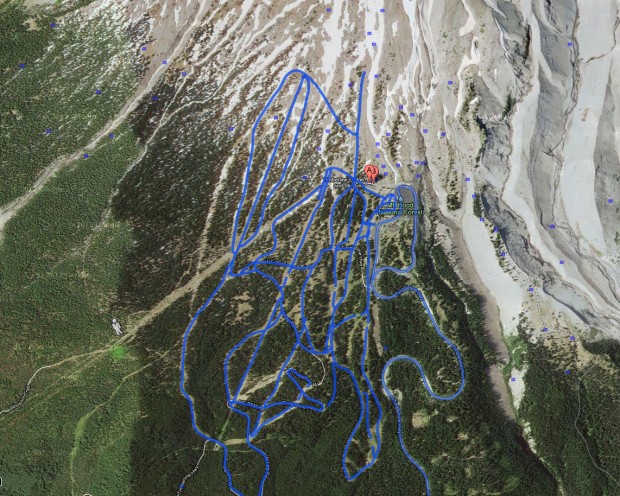
Fig. 33 - The ski area before the Timberline.
A majority of the film's sections open with viewing the front of the Timberline from the ski slope area below it out front. Perhaps this is why.
Because of the way the exterior set is designed so differently from the real Timberline, and our not seeing the maze before the Timberline, the hedge maze can be intended to be intuited and accepted as being behind the lodge. People insist, "It is behind", because we don't see it in front. But because of the placement of the garage and the lodge's single Snowcat in the opening aerial, and Dick's approach to the lodge at the film's end being from the southeast and his coming over the hill beside the garage, the hedge maze is revealed to be at the front of the lodge. And there's a reason for this. It is impossible to say what is exactly where when the hotel is crazy with impossible windows, doors leading to impossible rooms, people navigating their way from area to area via an impossible floor plan, and no relation had between its parts other than the psychological or shared themes. No interpretation based in realism is ultimately to be had. And, as we shall see, as the film goes along, the hotel is itself a maze of repeating features. Which is a reason why things are designed for us to have no idea where in the world the maze actually is.
So, please don't imagine that I'm simply pointing out, "Hey, look, Kubrick didn't faithfully duplicate the Timberline!" Instead, I'm saying that he recreated it in such a way that significant disequilibrium is caused for the viewer.

Fig. 34 - Preparing to cross the parking lot
Wendy asks when the Overlook was built as all step into the drive to cross to the lodge. Stuart begins to respond.
WENDY: When was the Overlook built?
STUART: Oh...
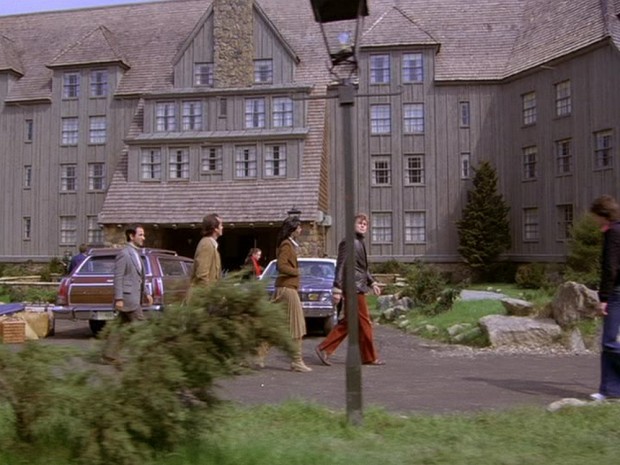
Fig. 35 - Cut to everyone walking now parallel the Overlook rather than perpendicular it, and already past the main portion (presumed lobby) of the hotel, as if it's not there.
111 MS parking lot exterior lodge. (21:31)
Kubrick changes shots and direction in the middle of Stuart's reply. The group was moving perpendicular the lodge. Suddenly, the group is moving parallel the lodge and are already past the main entrance of the lodge, down toward the end of the parking lot next a station wagon and two-tone vehicle, some distance from where they had been.
STUART: Construction was started in 1907 and was finished in 1909. The site is supposed to be located on an Indian burial ground and I believe they actually had to repel a few Indian attacks as they were building it.
The overlay of Stuart's audio response to Wendy begins in one shot and continues, without break, in the next, and represses the audience's awareness there has been a change in direction of the movement of the group and that they are a number of feet beyond where they should be.
This 90 degree turn and transposition of the group a number of feet from where they were places us in the approximate location across from where the entrance to the maze will be viewed at the end of the film, for at the film's end the maze entrance moves 90 degrees to face the lodge.
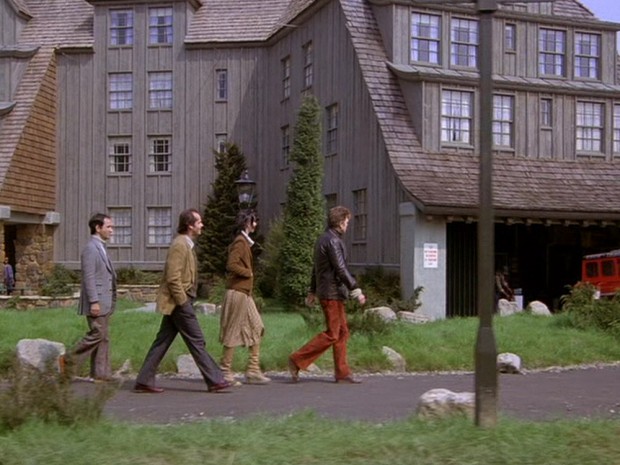
Fig. 36 - Approaching the garage, where is kept the Snowcat.
ON THE INDIGENOUS THEME CONTAINING MULTIPLE LEVELS OF INFERENCE AND ITS CONNECTION TO JACOB AND ESAU
This section is nonessential reading that illustrates how multiple interpretations can be had and the difficulty in sorting out what may be intentional.
There would have been no Indian attacks to repel in 1907 to 1909. The story recalls a romanticized West, the history of expansion and the rationalization of the creation of a home for Democracy and equality even if on the occupied land of other peoples, the lodge perfumed with gloried Manifest Destiny and empire.
The Indian story is one that Kubrick inserted, as well as the emphasis on the American flags, and the maze. There was no maze in Stephen King's book.
Just as Wendy attempts to gloss over darker facts to do with the family, so does America conceal and deny the genocide of the original inhabitants of the land in the name of freedom and liberty. Kubrick is likely addressing that often hidden side of American history here, but the movie is multi-layered. With the myth of the flood we've also a seeming wiping out of an original population, an older civilization, that was replaced with a new. This new civilization too would have been established upon the bones of the old.
Kubrick refers to Jacob and Esau in the film through the musical choices. Because of Kubrick's introduction of the story of Jacob and Esau, I've considered that there may be here an allusion to yet another older realm, kabbalistically, that of the Edomite Kings, Edom meaning "red", which is also Esau, as is stated in Genesis 36:1: "And these are the generations of Esau, who is Edom."
But this could very well be my own personal Rorschach, not in respect of Kubrick introducing the myth of Jacob and Esau, for he did, but that there may be something of the Edomites involved.
Edom comes from ADM, which is of course also from the same ADM (there are "point" differences in pronunciation) that gives us the name of the supposed first man, ADM--and in ADM we find DM, which is blood and supplies the reddish hue.
One can skip the following lengthy quote, but it contains some interesting ideas that I felt deserved reference here.
513. BEHOLD! this have we learned in the "Book of Concealed Mystery": that the Ancient of the Ancient Ones before that He prepared His conformations 2 (in the equilibrium of balance) formed certain kings, collected certain kings, and gave due proportion unto certain kings; but they only subsisted (for a time) until He could expel them; and in that time hath He concealed them.
514. This is intimated in those words, Gen. xxxvi. 31: "And these are the kings which have reigned in ADVM, Edom." In the land of Edom; that is, in the place wherein all judgments exist.
515. But all these subsisted not until the White Head 1 of the Ancient of the Ancient Ones was disposed (in its ordination).
516. When this was conformed, He disposed all the inferior conformations, and all the superior and inferior forms were thus arranged.
517. Thence we learn that unless the head (or ruling power, or government) of a nation, whatever form of government it may happen to be, be first properly constituted, that nation cannot be properly ruled. For if the head be first disposed aright, then all things can be ordained, but if that be not first disposed aright, neither can the nation be governed aright.
518. The ordering of all things is from the Ancient of Days. For before that He was disposed in His conformation, nothing could be ordained, because as yet it was first necessary that Himself 2 should be ordained; and all the worlds were desolate.
519. Which these words intimate, ibid. 32: "And there reigned in Edom Bela, the son of Beor."
520. "And there reigned in Edom." Here is a certain venerable Arcanum hidden; for herein is that place intimated wherein all the judgments are collected together, and whence they depend.
521. "Bela, the son of Beor." This is the tradition. This denoteth the most rigorous judicial decree, for whose cause there are collected together a thousand times a thousand authors of mourning and woe.
522. "And the name of his city is Dinhabah." What is DNHBH, Dinhabah? As if it were to be said, "Give forth judgment." Like as it is written, Prov. xxx. 15: "The horse-leech hath two daughters, crying, 'Give, give.'"
523. But when he ascendeth, so that he may be conformed therein, he cannot subsist and he cannot consist. Wherefore? Because the form of the man is not as yet constituted.
524. What is the reason of this? Because the constitution of man containeth all things under this form, and in that form are all things disposed.
525. And because that constitution of Adam was not as yet found, they (the Edomite Kings) could not subsist, nor be conformed, and they were destroyed.
526. Have they then been abolished, and are all these included in (the supernal) man? For truly they were abolished that they might be withdrawn from form, until there should come forth the representation of Adam.
527. But when that form is configurated, they all exist, and have been restored in another condition.
529. Some among them are mitigated, and (some) are not mitigated; but evidently there are certain of them which have not been mitigated.
529. And if thou shalt say: "Also it is written, 'and he died,' surely that denoteth that they were altogether abolished." I answer that it is not so; but whosoever descendeth from his former position wherein he was before, concerning such an one is it said in Scripture that he died.
530. Like as it is written, Exod. ii. 23: "And the King of Egypt died." Because he descended from the former condition wherein he was.
531. But after that Adam was constituted they are called by other names, and are mitigated in a permanent condition through him; and they exist in their place, and are all called by other names and not by their former (appellations).
532. Excepting that one 1 concerning whom it is written, Gen. xxxvi. 39: "And the name of his wife was Mehetabel, the daughter of Matred, the daughter of Mezahab.
533. For what reason? Because they were not abolished like the others. Wherefore? Because they were male and female, like as the palm-tree, which groweth not unless there be both male and female.
534. And because now they are found male and female, and it is not written concerning them that they died like as the others, but remained in a fixed condition.
535. But they were not (definitely composed) until the form of the man was composed (that is, the supernal man). But after that the form of the supernal Adam was constituted, they were restored in another condition, and came in proper order.
The Kabbalah Unveiled
The Edomite Kings are found in Genesis 36:31-39. They recall the struggle of Jacob and Esau, the right and the left, because they are a continuation of it, the Edomites the progeny of Esau, belonging wholly only to the left, the side of judgment.
ADM, the first man, and his line, is on the side of Jacob, who is considered righteous, whereas ADM as Edom, who is Esau, the elder brother of Jacob, whose birthright was usurped by Jacob, is on the left. Jacob, usurping Esau's birthright, became the chosen child.
Edom, in the Kabbalah, is frequently identified with the Egypt of the Exodus.
So, one could look to this idea of a "former" inhabitant and see either Bill Blakemore's thesis that The Shining contains within it the story of American Indians, or one could see another form of "red man", the Edomite kings, who were of Esau, the "red" man of the hunt, whereas Jacob was the man of the tent, the builder.
I think that in this case, as elsewhere in the film, we could have several layered stories. We have references to the Colonial and American genocide of American Indians. We have overt references to Jacob and Esau. But we've no way of knowing if there may be references to the red men as found in the Edomites. Indeed, it may be that Kubrick didn't intend introducing ideas concerning the Edomites, but they follow if only through the several times in the film he references Jacob and Esau.
King makes less than a handful of references to Indians in his book and they have to do with things unseen.
A place for everything and everything in its place, Mommy said. Then you know where it is when you want it. But now things had been misplaced. Things were missing. Worse still, things had been added, things you couldn't quite see, like in one of those pictures that said CAN YOU SEE THE INDIANS? And if you strained and squinted, you could see some of them--the thing you had taken for a cactus at first glance was really a brave with a knife clamped in his teeth, and there were others hiding in the rocks, and you could even see one of their evil, merciless faces peering through the spokes of a covered wagon wheel. ..
The Indians in King's description bring up polymorphing, metamorphing, assuming different shapes and chameleon-like concealment. Or, alternatively, they belong to the mind's tendency to anthropomorphize objects and look for form in chaos. Both of these ideas are key essentials in Kubrick's films from Fear and Desire on.
Ultimately, what is most important with the indigenous idea being introduced by Kubrick is humanity's discomfort with non-virgin territory, of the sense of primal, residual spirits or forces that can't be co-opted, and are these friendly or hostile. These forces become cognate with nature itself in the film, the hotel ever battling against the elements. The battle against nature and the dread of humankind's imposed order collapsing gives an in for unconscious content in the psyche to be activated.
THE SNOWCAT AND THE SPHINX
With the myth of the labyrinth we've not just the Minotaur of Crete but the possible inclusion of ancient stories of the Egyptian labyrinth that was linked with the sphinx and the pyramids and had numerous chambers above and below ground. It was also a burial ground.
Architecturally, it's possibly a reason Kubrick was interested in the Timberline serving as the exterior, due its central portion and the ability to spy in its towering roof a kind of pyramidal structure.
A little icing on the cake is that the Snow Cat belongs to the Timberline. What I mean is that engineers who worked on the construction of the Timberline lodge came up with the original Snowcat.
Terry Richard, of the Oregonian, writes,
The world's first snowcat was invented by Ira Davidson, foreman of the WPA crew of stone masons that built Timberline Lodge.
In A Clockwork Orange the Cat Woman lives in a house ornamented with sphinxes and lions, which was not the case in the Burgess book. Twin sphinxes decorate the front porch, perhaps recalling the two sphinxes that pull the chariot in the Chariot card of the Tarot. In Lolita we had numerous references to cats and tigers, Charlotte often dressed in a leopard print. In Eyes Wide Shut the tiger theme is brought in with the prostitute, Domino, having a large plush tiger on her bed, while the foyer of the Harford's home is lorded over by a very large painting of a cat.
The tiger/cat theme is a Kubrick kind of trademark.
It's my belief the Snowcat is intended to represent the sphinx.
Stuart introduces Jack and Wendy to the red Snowcat.
STUART: That's our Snowcat. Can you both drive a car?
WENDY AND JACK (in unison): Yes.
STUART: That's fine, because basically the Snowcat operates very much like a car and it won't take you long to get the hang of it.
THE GOLD ROOM AND THE UNWINDING HOURS AS REFERRING TO THE LABYRINTH THREAD
112 Crossfade exterior lodge to Gold Room hall. (23:56 begin crossfade to Gold Room hall outside the Gold Room, fade ending at 23:59.)
More cheery tweeting of birds as we now have a crossfade from the Snowcat to the Gold Room. The group walking away from us into the garage, in the crossfade, pairs with the same walking toward us in the Gold Room hall as the Gold Room hall dominates and the garage fades. A wonderful composition.

Fig. 37 - Crossfade from the parade to the Gold Room hall.
The hall is done in pinks and golds with long golden drapes. Showing the Torrances to the Gold Room, Ullman relates how it was recently decorated.
STUART: As a matter of fact, we brought a decorator in (24:02 another sha is perhaps heard now, or a sound much like it) from Chicago just last year to refurbish this part of the hotel.
We see a sign reading "The Gold Room" outside the ballroom, photos of performers on it. It's the same sign we observed in the lobby on the day of the interview. Beneath the lettering "The Gold Room" is "The Unwinding Hours".
The mention of the unwinding brings in once more the tale of the labyrinth and the minotaur and the thread that was unwound as the hero of myth, Theseus, progressed into the Minotaur's lair. Provided by Ariadne, the thread was intended to help the hero find his way back out. On the placard we see a sort of knotted maze enclosed in an arch.
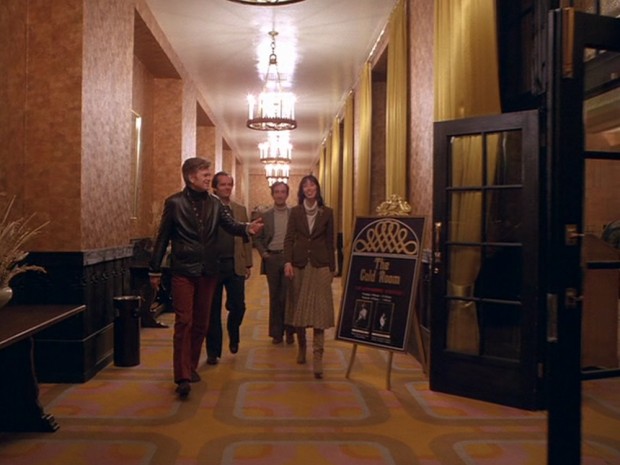
Fig. 38 - Introduced to the Gold Room where are held the "unwinding" hours.
WENDY: Well, he sure did a beautiful job. Pink and gold are my favorite colors.
Ullman leads them into the gold ballroom, much of which is flashily lined in small mirrored tiles of golden hue.
The group enters through one door while the camera passes through another so we have a brief black moment in time.
STUART: Uh, well, this is our gold ball room.
WENDY: I'll say!
ULLMAN: We can accommodate up to 300 people here very comfortably.
As they approach the bar Wendy dances a few steps.
WENDY: Boy, I bet you we could really have a good party in this room, huh, hon?
Ullman pops her bubble.
And it's pretty hilarious, because he has a penchant for doing this with Wendy. She thought she was going to be living in a fancy hotel room, and he instead presents her with Suite 3. She starts dancing across the ball room floor and now he's going to rain on that disco parade.
STUART: Well, I'm afraid you're not going to do too well here unless you brought your own supplies. We always remove all the booze from the premises when we shut down. That reduces the insurance we normally have to carry.
One has reached a sort of treasure heart of fairy tales and myth, the gold of Jack and the Giant, with this enormous room that causes Wendy to gasp. Here, again, are men working, cleaning, moving around the furniture. Beyond an area of red sofas we see green tables that remind of the gaming tables in the Game Room. At the far front of the room, on a glittering golden stage, is a grand piano, and before this is a man on a high ladder, which reminds of images of the Masonic interpretation of Jacob's ladder as the ladder of faith, hope and charity leading to the middle chamber, that of the heart (sometimes pictured as a blazing sun) where one receives one's "wages", so it may not be without significance that one of the ladders in the lobby was standing outside the cashier area, though we won't be aware for a while that it was the cashier's office. The ceiling sheathed with golden tiles, the great banks of lights are arrayed as if brilliant rays of sun that proceed to or from the vanishing point beyond, and in the center of them the man on the ladder stands just beneath one of several hanging chandeliers, only this one is dark, it isn't lit. (View image.)
There was a grand piano before the great staircase in the Colorado Lounge. There was an upright spinet in the Game Room. Here, again, is a grand piano. These pianos may form a link between these three rooms.
In contrast with the exceptionally tall ladder, a man with a short ladder passes by on stage.
JACK (pointedly): We don't drink.
STUART: Well, then, you're in luck.
The only black individual observed at the hotel is Dick Halloran (Scatman Crothers), the head chef. All the other employees we've observed are white. Dressed in a blue blazer and beige pants, he now approaches.
When we first become aware of Dick he seems to be coming toward us from the direction of the ladder, but is actually a background presence in the room beforehand, toying with a white tablecloth, unobserved, as our attention was on the movement of the group from the door to the bar in the foreground.

Fig. 39 - Dick approaches the Ullmans, Stuart and Bill.
STUART: Oh, Dick! Come on over and say hello to Mr. and Mrs. Torrance.
DICK: Sure.
ULLMAN: This is Dick Hallorann, our head chef.
JACK (shaking hands with Hallorann): Mr. Hallorann, I'm Jack, this is my wife, Winifred.
HALLORANN (shaking Wendy's hand): Glad to meet you, Winifred.
WENDY: Nice to meet you.
ULLMAN: The Torrances are going to take care of the Overlook for us this winter.
DICK: Oh, that's just great. How do you folks like our hotel so far?
WENDY: Oh, it's just wonderful.
At this point Wendy calls to Danny, waving.
WENDY: Hi, Danny!
113 MS Susie and Danny entering the Gold Room. (24:58)
And we cut to the other side of the Gold Room to see him entering, red-haired Susie leading him.
SUSIE: I found him outside looking for you.
JACK: Dan, did you get tired of bombing the universe?
Danny, turning so we only see LYERS on the back of his jacket, passes by his father, looking up at Dick.
DANNY: Yeah.

Fig. 40 - Danny found and returned to his parents by Susie.
Wendy calls him over to her side where Danny continues looking inquiringly at Dick. Both Wendy and Ullman thank Susie and she leaves.
STUART: Dick, if you're ready (sha sound at 25:11) now I think it would be a good idea if you could show Mrs. Torrance the kitchen while I continue on with Jack.
DICK: It would be a pleasure. Right this way, Mrs. Torrance.
WENDY: Great. See ya later, hon.
JACK: Bye, darlin'.
(25:25 Sha sound.)
It's now, as Wendy follows Hallorann with Danny, that we notice Danny's blue jacket has the word FLYERS on the back.
Dick leads Wendy and Danny behind the bar toward what will later be revealed as not an entrance to the kitchen but the bright red bathroom in which Jack is to have a confrontation with the seeming spirit of Grady who will relate a daughter of his had attempted to set fire to the hotel, so it's suiting that with the crossfade to the kitchen we'll see Dick, Wendy and Danny progressing through a Fire Exit doorway.
THE KITCHEN AS MAZE
114 Crossfade from the Gold Room to the kitchen entry. (Begin crossfade to the kitchen at 25:22 ending at 25:23.)
With the crossfade from the bar to the entrance to the kitchen, Wendy and Danny and Dick, exiting the Gold Room, cross their own paths as they approach the kitchen, passing through a large doorway to the side of which is a sliding door reading "Fire Exit, Must Be Kept Clear".
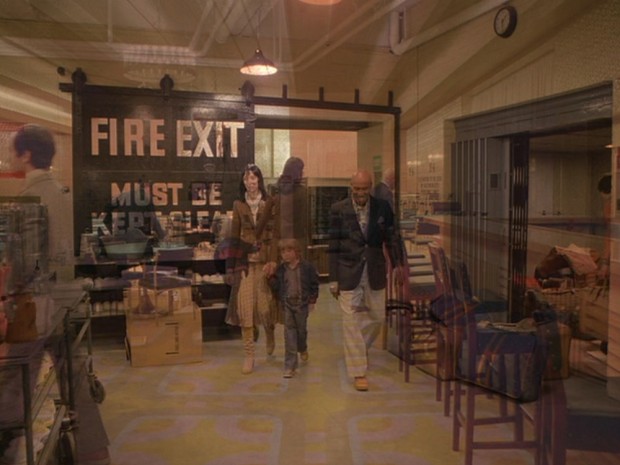
Fig. 42 - Crossfade from the Gold Room to an entry to the kitchen.
The floor of the Gold Room, crossfading into this other floor, takes on a greenish hue. The large freight elevator on the right matches the broad expanse of the bar. The hall beyond the entry to the kitchen, with this crossfade, takes on a pink hue and there even is the illusory appearance of wainscoting at the bottom as if we are looking at a guest hall rather than a service hall.
The man loading the freight elevator with baggage is the last we will see of employees preparing to leave who aren't part of cleaning crews. If one hasn't noticed before now, these employees carrying out baggage were all young people, and there were a lot of them. No middle-aged or older people. Any who weren't youths have all been part of clean-up crews. The majority of guests viewed on the day of the interview were all middle-aged and older, but for the two youthful tennis players, which leads one to wonder if the tennis players were employees.
A clock over the freight elevator may read 1:30 or 2:30.
DICK: Mrs. Torrance, your husband introduced you as Winifred. Now, are you a Winnie or a Freddie.
There are boxes of goods. Large coffee urns. Plates on trolleys. We continue into the kitchen proper where one of the first signs we see ironically reads "No eating or drinking".
WENDY: I'm a Wendy.
DICK: Oh, Wendy, that's nice. That's the prettiest.
The kitchen is itself a maze with shelves and shelves of huge pots fit for cooking for giants, giant ovens and stoves.
WENDY: God, this is the kitchen, huh?
DICK: How do you like it, Danny? Is it big enough for you?
DANNY: Yeah, it's the biggest place I've ever seen.
As they round some shelves, we see in the background yet another ladder, only this one is now closed and propped against a back wall.

Fig. 43 - Dick guides Wendy and Danny on a meandering path through the kitchen.
Outside the Gold Ballroom there had been observed the sign reading "The Unwinding Hours" that reminded of the thread that Theseus unwound in the labyrinth. Now Wendy remarks on the feeling of the kitchen as a maze.
WENDY: Yeah, this whole place is such an enormous maze I feel like I'll have to leave a trail of bread crumbs every time I come in.
And with that comes the audience's stock wealth of fairy tale imagery of mazes and deep forests, of Hansel and Gretel whose bread crumbs proved futile, eaten by the birds.
We see "No Smoking" signs and "Keep this area clean" signs.
DICK (laughing): Don't let it get you down, Mrs. Torrance. It's big, but it still ain't nothing but a kitchen, and a lot of this stuff you'll never have to touch.
WENDY: I wouldn't know what to do with it if I did.
DICK: Well, one thing for sure, you don't have to worry about food, because you folks could eat up here a whole year and never have the same menu twice. Now, right here is our walk-in freezer...
Dick shows Wendy into the walk-in freezer next to the chef's office.
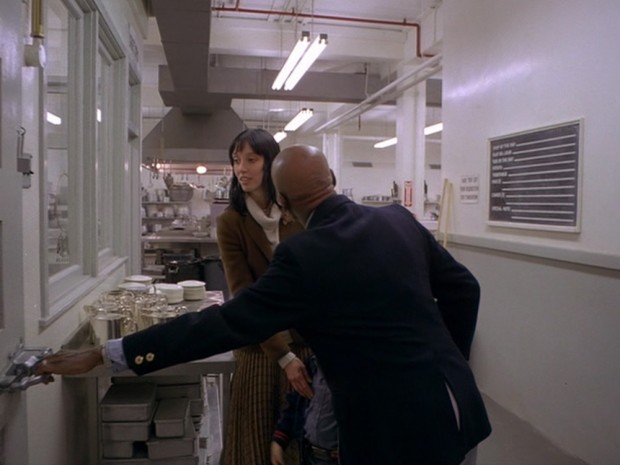
Fig. 44 - Dick shows Wendy into the walk-in freezer, C-4.
115 MS. (26:13)
Cut to an interior view, Dick entering.
DICK: Now, here is where we keep all of our meat.
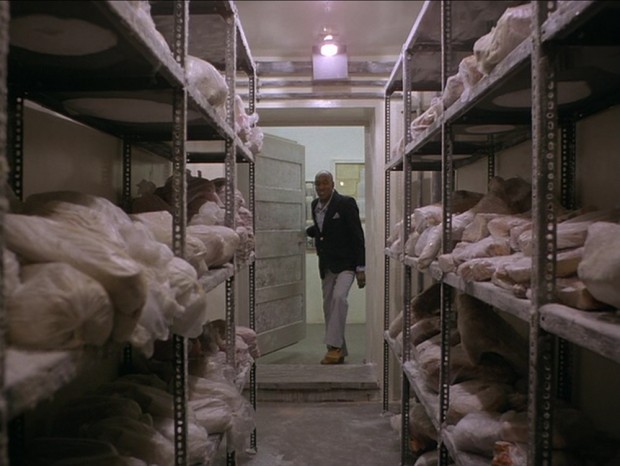
Fig. 45 - Dick is shown entering the C-3 meat locker, rather than C4.
We see outside not the blackboard but instead the time clock, that is because though Kubrick showed Dick beginning to show Wendy into the walk-in freezer, C4, he is here entering C3, where is kept the meat and is opposite from C4. This could be viewed as a kind of doubling or mirroring.
When viewers comprehend they are in C3 rather than C4, this is realized as being one of the weirder and obvious reversals. And, indeed, it's interesting the way this is done. The actors are shot entering C4 to the left, and when they exit C3 Kubrick has us looking from an opposing view in the hall and so they exit C3 from the left of the screen.
DICK: You've got 15 rib roasts, 30 ten pound bags of hamburger, 12 turkeys, 40 chickens, 50 sirloin steaks, 2 dozen pork roasts, 20 legs of lamb. Do you like lamb, Doc?
DANNY: No.
DICK: You don't! Well, what's your favorite food then?
DANNY: French fries and ketchup.
DICK: Well, I think we can manage that, too, Doc. (Dick laughs.) Come along, now, watch your step.
I've written earlier in this section, under the "On 'Dies Irae' of the Opening, the Story of the Sacrifice of Isaac, and the Rainbow", on Dick's asking if Danny likes lamb.
A humorous aside, Vivian Kubrick's documentary on the making of The Shining has, at the beginning, Jack ordering out for food, then going into the bathroom to brush "the lamb" out of his teeth in preparation for going on set. Vivian invades the bathroom, filming him and herself in the mirror as he brushes his teeth, then he ushers her out. The tidbit reminds also of Danny's vision in the bathroom mirror and his story of brushing his teeth prior to it.
116 MS. (26:42)
We observe them exiting the C3 freezer over which is a lit red bulb. And, as already covered above, as they exit the C3 freezer we realize that they are are exiting a freezer opposite the corridor from the one they entered, the C4 freezer being next the office, which is the freezer they'd entered.
WENDY: Mr. Hallorann, how did you know we call him Doc?
DICK: Beg pardon?
WENDY: Doc. You called Danny "Doc" twice just now.
DICK: I did?

Fig. 46 - Exiting the C3 meat locker.
Red bulbs burn above the three doors though it would seem the bulbs should only be burning if a freezer is in use. The three red bulbs are reminiscent of the three red darts on the dart board in the Game Room. We even have on either side of them the black boards that embrace the dart board in the Game Room. What I mean by this is Kubrick has Dick ushering Wendy and Danny into C-4 and we see the menu blackboard on the wall screen right, then when they are leaving instead C-3 we again see the blackboard but on the wall screen left. One blackboard becomes two with the three red darts of the game room dartboard between. I suppose one could then say that the time card area with its mirror is also part of the construct of these framing blackboards.
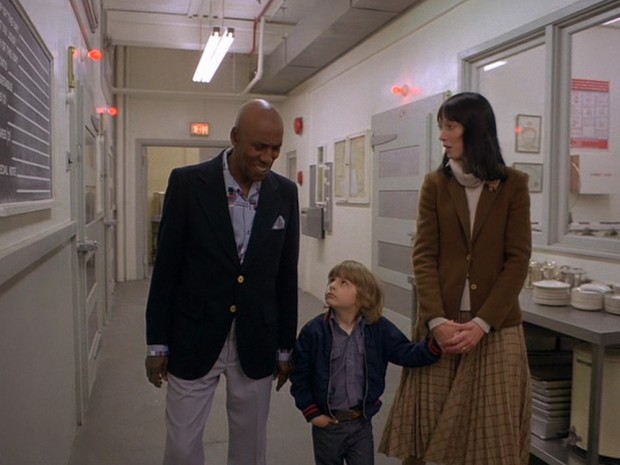
Fig. 47 - Rounding the corner to the storage room.
More doubling, the fact that Danny has two names, being also called Doc, just as Wendy is also a Winnifred.
Scatman Crothers played Doc Lynch in Clint Eastwood's Bronco Billy which was also released in 1980.
WENDY: We call him Doc sometimes, like in the Bugs Bunny cartoons.
(Sha sound. 27:00.)
They pass the Chef's office, moving then around the corner toward another locker. We see in the background a sink and row of carving knives and a clock reading either 10:05 or ten to one. Likely 12:50. When they had passed through the fire exit into the kitchen area the clock over the freight elevator read 1:30 or 2:30.
WENDY: But how did you know that?
DICK: Well, I guess I probably heard you call him that.
WENDY: Well, it's possible but I honestly don't remember calling him that since we've been with you.
DICK: Well, anyway, he looks like a Doc doesn't he? Nahhh, what's up, Doc?
Many people catch the fact that they begin to enter one freezer but then are shown entering and exiting the other, so I think it's one of the oddities that is crafted to be first noticed. As such, it is a lead-in oddity to Wendy's querying Dick on how he happened to know Danny was also called Doc.
SHINING IN THE STORY ROOM - HOW THE CALUMET BAKING POWDER MIGHT TRIGGER THE JACOB'S LADDER SHINING STATE AS IN THE BATHROOM
Dick slides off the question, turning to open a door.
DICK: Now, this is the story room.
This is no error, Dick says, "the story room" rather than "storage room".
We have only rounded the corner from the C2 locker and here is the entrance to the C1 "story" room. Once inside we will see no other entrance door but C1. The reason most will not be aware that the C2 door leads nowhere is because, as Dick and Wendy round the corner, the camera moves only to show them and the scene behind, then returns to show the storage room door only when we can't see anything of the hall beyond except for the "S OFFICE". Whether or not we are to read the earlier entry into C4 transforming into an entry into C3 (from which they exit) or one can argue there is a cut in time there, we effectively have a consolidating of C3 with C4 and then C2 with C1.
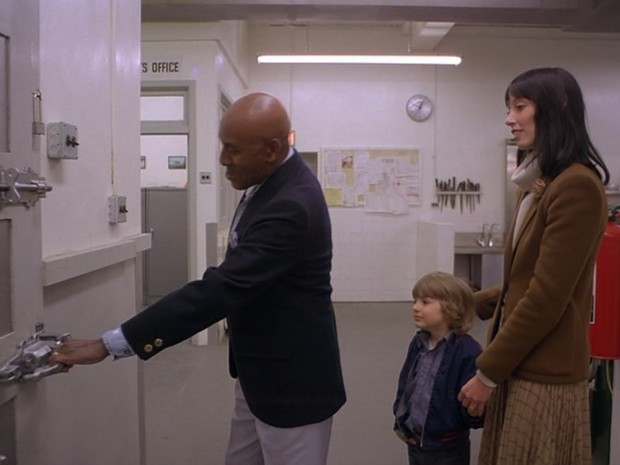
Fig. 47 - Entering the "story" room.
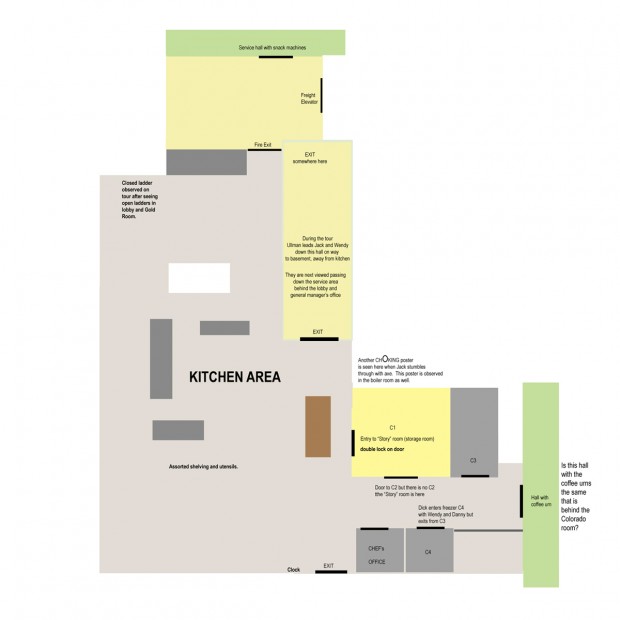
Fig. 48 - The general layout of the kitchen.
117 MS of the group in the storage room. (27:20) (Sound of sha.)
C1 is a large storage room with two locks whereas the freezers only have one lock. Dick explains to Wendy that in there they keep all the dried and canned goods. We see boxes of Tree Top juice (we are certainly high up here) and Maxwell House coffee, huge jars of Libby's fruits and pears and Heinz sweet relish and catsup, peppers and hams and just about anything one can imagine. As an ominous high and piercing whine enters, she smiles at the wealth of food he lists off.
We see also Kellog's Frosted Flakes, notable for it's "Tony the Tiger" mascot, bringing in Danny's alter.
DICK: In here, Mrs. Torrance, is where we keep all the dried goods and the canned goods. We've got canned fruits and vegetables, canned fish and meat, hot and cold cereals, Post Toasties, corn flakes, sugar puffs, rice krispies, oat meal, wheat thin and cream of wheat.
118 MS to MCU Danny. (27:39)
As Dick continues, the camera cuts to Danny, distracted yet intensely gazing at Dick. Behind him we see boxes of Tree Top apple juice, Ritz crackers, Texsun pineapple and grapefruit juice, orange juice, Willapoint minced clams, Golden Ray products, Kellogg's corn flakes, Libby's peas and carrots and peaches.
DICK: We got a dozen jugs of black molasses, we got 60 boxes of dried milk...
 117 |
 118 |
119 MS to MCU Dick. (27:46)
The camera cuts to Dick standing before a can of Calumet baking powder with the American Indian in his feathered headdress on front (a Calumet is a medicine/peace pipe), Tang (lots of Tang, the 70's drink of astronauts), zooming in on him, the whine increasing in volume as Dick continues his spiel.
DICK: 30 12 pound bags of sugar...
His voice is finally drowned out by the whine--and Dick looks at Danny and Danny appears to hear Dick speak to him telepathically.
DICK: How'd you like some ice cream, Doc?
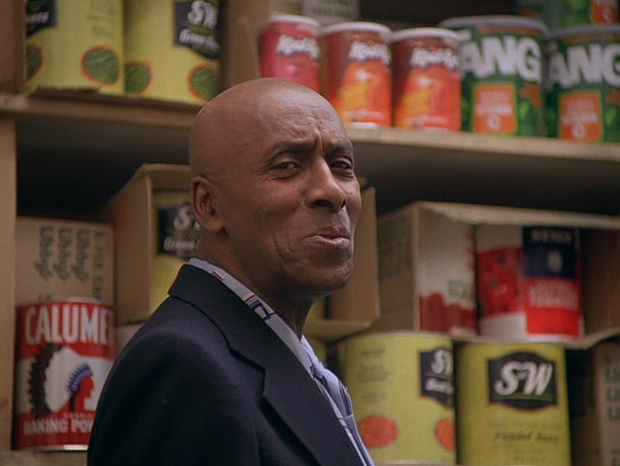
Fig. 48 - How'd you like some ice cream, doc?
120 CU Danny. (27:56)
A close-up of Danny staring in amazement.
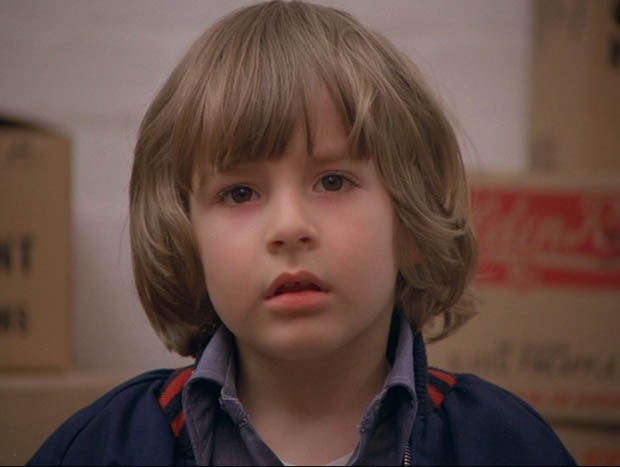
121 MS of Dick and Wendy in the storage room. (28:00)
Dick's voice rises in volume again.
DICK: ...sociables, (unable to decipher what next) rolls and seven kinds of what have you.
We see that the shot of Dick with the Calumet and S&W canisters behind him was impossible for the Calumet powder is on a lower level than viewed in the close-up shot.
Now, as to the Calumet baking powder. Yes, the Calumet is the peace pipe and links in with the smoking theme and the American Indian theme. But we have another possible layer of meaning here that refers back to "The Awakening of Jacob" played over Danny's first shining in the mirror on the day of the Interview. We don't see the full word for Calumet here. Instead we see CALUME. The Hebrew word for Jacob's ladder is cullam. It may seem a far-fetched association but as the ladder idea is found in Danny's first shining (he was on a step stool) and in his second shining in the game room (he was on a step stool), then with this third shining of his I'm going to consider we may have the ladder expressed not physically but in the Calumet as cullam. Not married to the idea, I just wanted to make note of it.
Dick continues on listing foods.
DICK: Now we've got dried peaches, dried apricots, dried raisins, and dried prunes.
122 MS kitchen, exterior storage room. (28:09)
DICK: You know, Mrs. Torrance, you have to keep regular if you're going to be happy.
Dick and Wendy laugh.
Ullman and Bill Watson and Jack approach from the direction Dick and Wendy and Danny had earlier entered.
STUART: Hi!
WENDY: Hi!
STUART: How are you getting on?
DICK: Just fine.
STUART: Dick, can we borrow Mrs. Torrance for a few minutes? We're on our way through to the basement. I promise we don't keep her very long.
DICK: No problem, Mr. Ullman, I was just getting to the ice cream. You like ice cream, Doc?
(Sha sound. 28:29.)
DANNY: Yeah.
DICK: I thought you did. You folks don't mind if I give Danny some ice cream while we're waiting for ya.
JACK: No, not at all.
WENDY: No, we don't mind.
DICK: Good.
Ullman begins scratching the side of his nose with the crooked finger that reminds of Danny's finger speaking for Tony.
WENDY: Sound good to you, Doc?
DANNY: Yeah.
WENDY: Okay. You behave yourself.
The group separates.
DICK: Now, what kind of ice cream do you like, Doc?
DANNY: Chocolate.
DICK: Chocolate it shall be, son.
Jack walks with his arm around Wendy's waist as they depart. I believe it's the only display of physical affection that he offers her in the film. In the "Tuesday" section, they do briefly kiss right before he blows up at her, but she is the one who has offered the kiss.
THE GHOST SHIP, THE FLYING DUTCHMAN, AND INDIVIDUALS IN EXILE
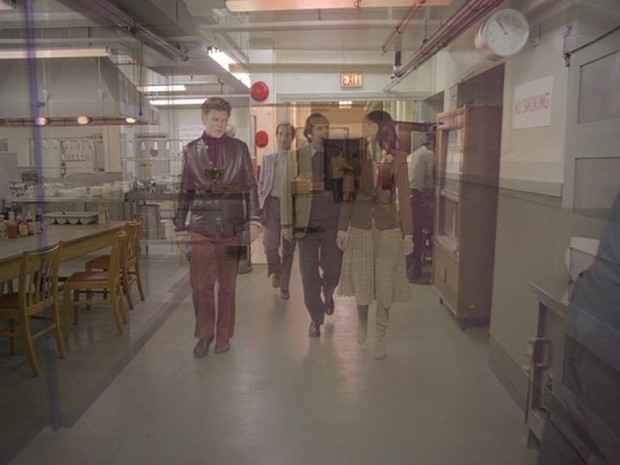
Fig. 50 - Crossfade from the kitchen to the service hall behind the office.
123 Crossfade from kitchen to the service hall behind the lobby. (28:51 Crossfade begins and ends about 28:55.)
On the way to the basement, the group now passes down the service hall behind the lobby.
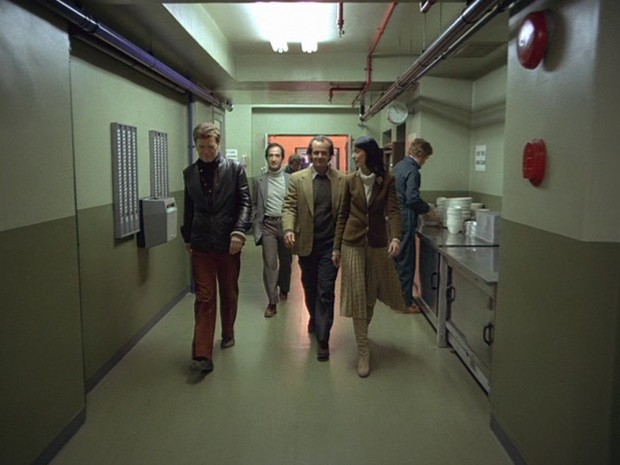
Fig. 51 - Stuart leads the Torrances through the service hall behind the office, on the way from the kitchen to the basement.
WENDY: It's amazing how much activity is going on today.
And here we see a clock, the hands of which read 10:55. The clock we'd viewed as they entered the "Story" room likely read 12:50. When they had passed through the fire exit into the kitchen area the clock over the freight elevator read 1:30 or 2:30. The Overlook tends to be all over the place time wise, which is funny as Kubrick calls our attention to clocks and time by having the last two sections of the film being titled 8 am and 4 pm. One could say it's a simple matter of continuity problems, that these clocks aren't matching, but Kubrick could easily have taken care of this by not showing these clocks and having to worry about keeping them reconciled. Instead, I think the choice to keep them not synced is deliberate.
STUART: Yes, well the guests and some of the staff left yesterday. But the last days are very hectic (he glances back at an employee who crosses from one of the steel cabinets to his office), everybody always wants to be on their way as early as possible.
They turn down another hallway into a white hall with purple and black and red pipes, and pass cases of 7 Up, continuing away from us.
STUART: By 5 o'clock tonight, you'll never know anybody was ever here.
WENDY: Just like a ghost ship, huh.
Wendy's remark reminds us again of her penchant for ghost and horror tales. Or at least Jack said she had a penchant for such tales, though our introduction to her showed her reading Catcher in the Rye.
STUART (laughing): Yes.
That is the last we see of Stuart Ullman and Bill Watson.
The mention of the ghost ship perhaps links back to Danny's jacket on which was the word, "flying", referencing the tale of the Flying Dutchman. The Flying Dutchman may also be partly observed in Eyes Wide Shut, when Dr. Harford is wandering after his wife's revelation to him of her fascination with another man being so powerful she would have left him in a moment, and then Marion, the daughter of a patient who has died, professing her love for Harford with similar intensity. Unhinged, he walks the streets, which become their own maze, and toward the beginning of that journey passes by a place called the Flying Burritos, but only the word "flying" is lit with neon in a window. The word "Burritos" is barely observable above the establishment, and as we had prior a couple other Dutch references I think it's plausible to think we were supposed to imagine Flying Dutchman.
As observed earlier, when Danny was first seen we could only see the word "lyers" on his jacket but eventually it was revealed as reading "flyers".
The Flying Dutchman is a legend of a ghost ship doomed to wander the sea until Judgment Day, its captain and crew never afforded rest, though in some versions the ship may dock once every seven years. Individuals who are a part of normal society occasionally glimpse the ship and know it by its ghostly light. The Flying Dutchman is one of a number of legends of wanderers, sometimes in perpetual exile, sometimes nearly immortal. One of the first would be Cain of the biblical story of Cain and Abel, who killed his brother, and was cursed to be a wanderer. Odysseus is another such wanderer, cursed by Poseidon to spend ten years roaming the ocean. And then there is the Christian tale of the so-called Wandering Jew.
Bill, in Eyes Wide Shut became a kind of temporary wanderer, one could say. Alex in A Clockwork Orange became also a wanderer, after the treatment with Serum-114, homeless. The Torrance family is a family in exile, forced out of Vermont, friendless in Boulder, and finally isolated in the Overlook.
THERE IS NOTHING IN ROOM 237
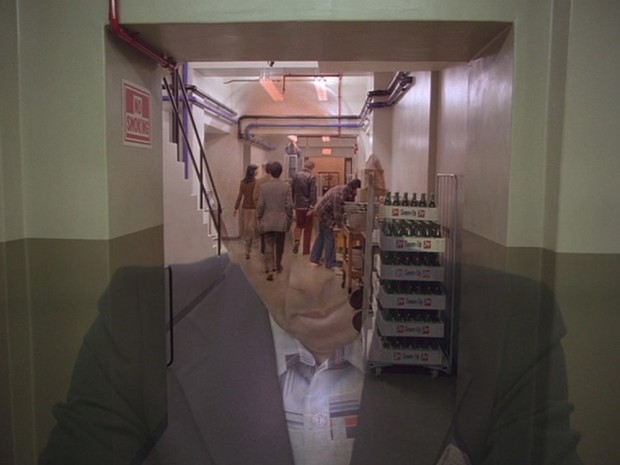
Fig. 52 - Crossfade from the 7-up hall to Dick with Danny in the kitchen.
124 Crossfade from hall to CU Dick in the kitchen. (29:12 begin crossfade to kitchen, ending at 29:15 with a "sha" sound.)
DICK: "Do you know how I knew your name was Doc?
(Sha sound.)
125 CU Danny. (29:20)
Danny, sitting with his presumably now empty veritable silver grail of chocolate ice cream, shrugs his shoulders.
126 CU Dick. (29:25)
DICK: You know what I'm talking about, don't ya?
127 CU Danny. (29:29)
Danny shrugs.
128 CU Dick. (29:33)
DICK: I can remember, when I was a little boy, my grandmother and I could hold conversations entirely without ever opening their mouths. She called it shining.
129 CU Danny. (29:50)
DICK: And for a long time I thought it was just the two of us that had the shine to us.
130 CU Dick. (29:57)
Just like Danny probably thought he was the only one.
DICK: But there are other folks, though mostly...
131 CU Danny. (30:04)
DICK: ...they don't know it or don't believe it.
Dick finishes, and waits for Danny to say something but he doesn't.
132 CU Dick. (30:08)
DICK: How long have you been able to do it?
133 MCU Danny from Dick's side. (30:14)
Danny says nothing.
(30:16 sha sound.)
DICK: Why don't you want to to talk about it?
134 CU Danny. (30:23)
DANNY: I'm not 'upposed to.
135 CU Dick. (30:29)
DICK: Who says you ain't supposed to?
136 CU Danny. (30:33)
DANNY: Tony.
137 CU Dick. (30:38)
DICK: Who's Tony?
138 CU Danny. (30:42)
DANNY: Tony is the little boy that lives in my mouth.
139 CU Dick. (30:47)
DICK: Is Tony the one who tells you things.
140 CU Danny. (30:53)
DANNY: Yes.
141 CU Dick. (30:56)
DICK: How does he tell you things?
142 MCU Danny from Dick's side. (31:00)
DANNY: It's like I go to sleep and he shows me things, but when I wake up I can't remember everything.
143 CU Dick. (31:11)
(Very quiet sha sound.)
DICK: Does your mom and dad know about Tony?
144 CU Danny. (31:16)
DANNY: Yes.
145 CU Dick. (31:18)
DICK: Do they know he tells you things?
146 CU Danny. (31:21)
DANNY: No, Tony said never to tell them.
147 CU Dick. (31:26)
DICK: Has Tony ever told you anything about this place? About the Overlook Hotel?
148 MCU Danny from Dick's side. (31:34)
DANNY: I don't know.
149 CU Dick. (31:38)
DICK: Now, think real hard, Doc, think.
150 MCU Danny from Dick's side. (31:43)
DANNY: Maybe he showed me something.
151 CU Dick. (31:49)
DICK: Try to think of what it was.
152 MCU Danny from Dick's side. (31:53)
DANNY: Mr. Hallorann, are you scared of this place?
153 MS Dick and Danny, view of Chef's office beyond. (31:59)
DICK: No, I'm not scared of nothing here. It's just that, y'know, some places are like people. Some shine and some don't and the Overlook Hotel has something about it that's like shining.
DANNY: Is there something bad here?
154 CU Dick. (32:37)
DICK: You know, Doc, when something happens, it can leave a trace of itself behind, say like if someone burns toast.
155 MCU Danny from Dick's side. (32:50)
DICK: Well, maybe things that happen leave other kinds of traces behind...
156 CU Dick. (32:57)
DICK: Not things that anyone can notice, but things that people who shine can see. Just like they can see things that haven't happened yet, well, sometimes they can see things that happened a long ago. I think a lot of things happened right here in this particular hotel over the years, and not all of them was good.
157 MS Danny from Dick's side. (33:29)
DANNY: What about Room 237?
158 CU Dick. (33:35)
DICK: Room 237?
159 MCU Danny from Dick's side. (33:40)
Dick reacts in such a way that Danny inquires if he's frightened.
DANNY: You're scared of Room 237, ain't ya?
160 CU Dick. (33:44) Dick insists he's not, uncomfortable, lying.
DICK: No, I ain't.
161 MCU Danny from Dick's side. (33:48)
DANNY: Mr. Hallorann, what is in room two three seven?
162 CU Dick. (33:53)
DICK (emphatic): Nothing. There ain't nothing in Room 237, but you ain't got no business going in there anyway, so stay out. You understand? Stay out!
 124 |
 125 |
 126 |
 127 |
 128 |
 129 |
 130 |
 131 |
 132 |
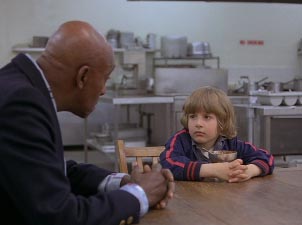 133 |
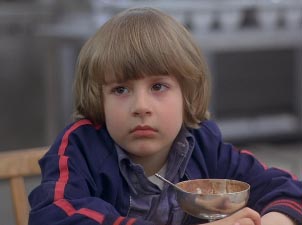 134 |
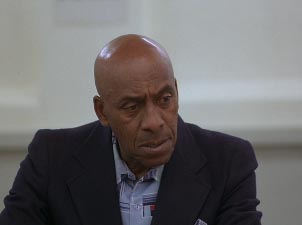 135 |
 136 |
 137 |
 138 |
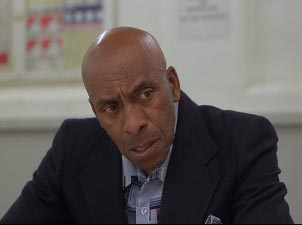 139 |
 140 |
 141 |
 142 |
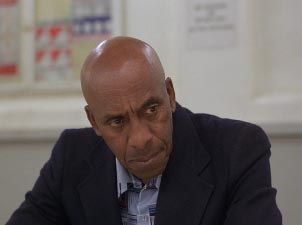 143 |
 144 |
 145 |
 146 |
 147 |
 148 |
 149 |
 150 |
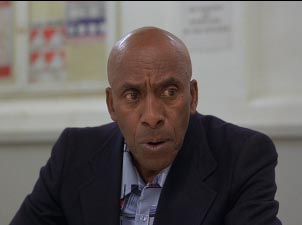 151 |
 152 |
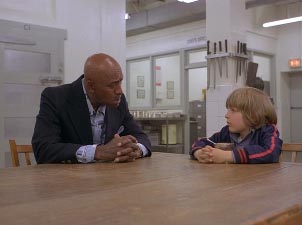 153 |
 154 |
 155 |
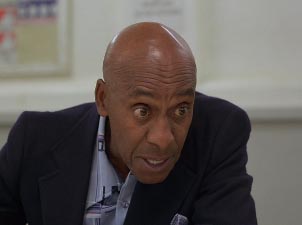 156 |
 157 |
 158 |
 159 |
 160 |
 161 |
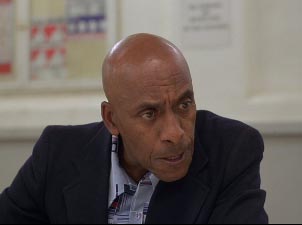 162 |
 163 |
Room 237 is just like that room in your home you couldn't go in when you were a kid, even with the light on, without feeling that something was watching and waiting to scare the life out of you. Oh, you didn't have a room like that? Were you the one hiding in the closet, waiting to jump out and scare your sibling?
163 CU Danny. (34:07)
Danny stares at Dick, speechless.
As must happen in fairy tales, we can rest assured that Danny will not stay out of Room 237. He must enter and encounter what's in there, eventually.
In review, what has Kubrick given us in this section?
The hotel is so happy the Torrances are here that it can barely contain itself. New playmates! And, by the way, there's nothing in Room 237, so there's no reason to creep around it, none at all.
What's the teaser candy bait?
On the surface, there really seems to be nothing weird about the place.
What's the distraction?
The audience is going to be looking so hard for red elevators and little girls and Room 237 that those things kind of become the distraction.
What's the secondary teaser candy bait?
Kubrick imposes a sensible facade so well with editing, constructing a seamless flow in the way the hotel is disclosed, that the first time people tend to notice something's fishy and that the sensible, seamless flow is not what it seems to be is when Dick is showing Wendy and Danny into one area and then they are suddenly entering an opposing freezer. People notice it, however, because Kubrick has made it noticeable. The bread crumbs don't match up.
What's the deep infrastructure?
Certainly not the maze! Kubrick couldn't afford to have King's animal topiaries springing to life all over the lawn and the maze is just a low budget disappointment with no special effects.
NEXT: A Month Later
Return to Table of Contents for "The Shining" analysis
Link to the main TOC page for all the analyses



